Room for the river
By Kate Newton
Since the 1950s, the Ngaruroro River in Hawke’s Bay has been steadily and deliberately restricted to a channel half its former width. As the likelihood of extreme flooding increases, is it time to re-imagine its future?
Supplied: DOC/Ian McNickle
Supplied: DOC/Ian McNickle
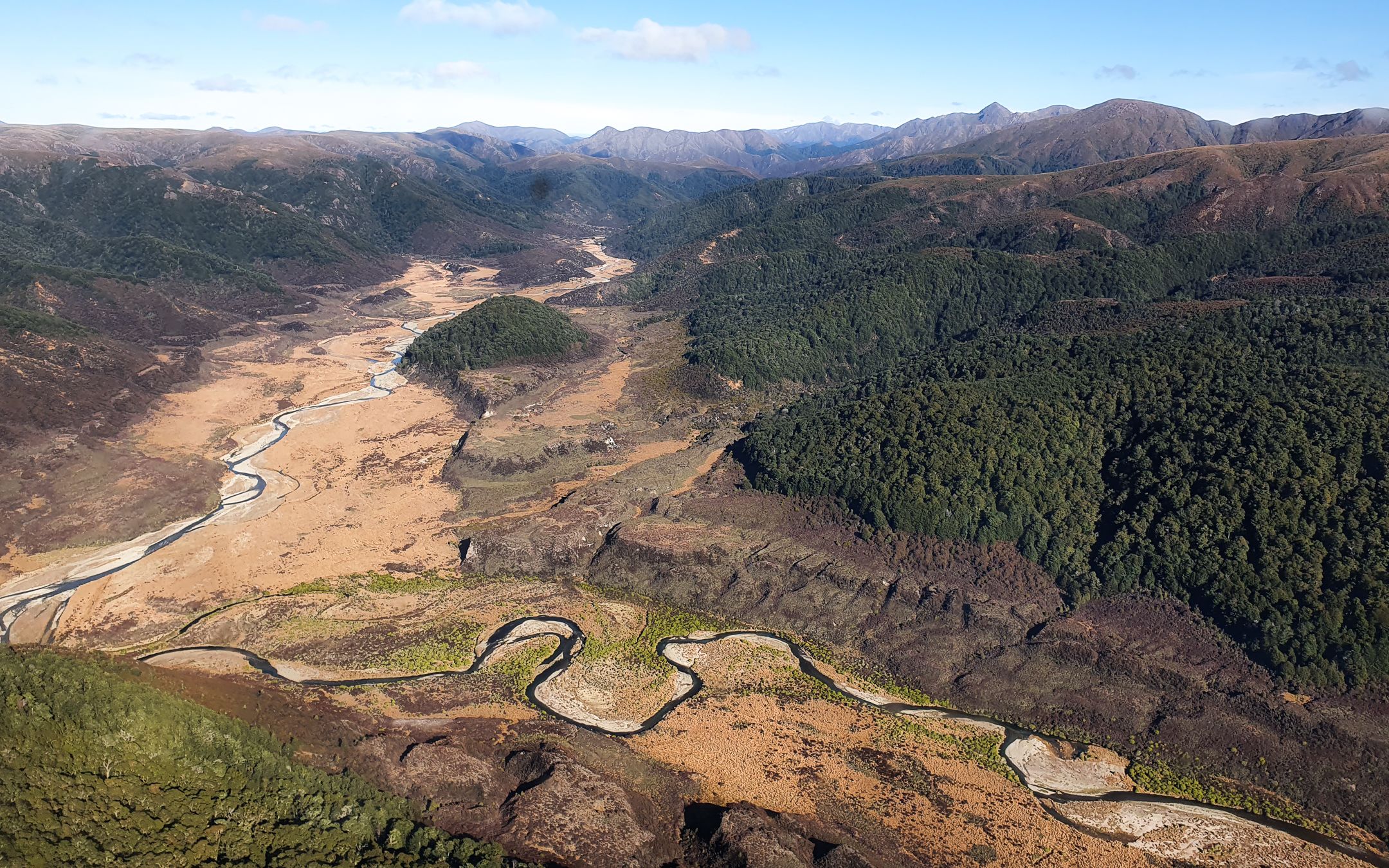
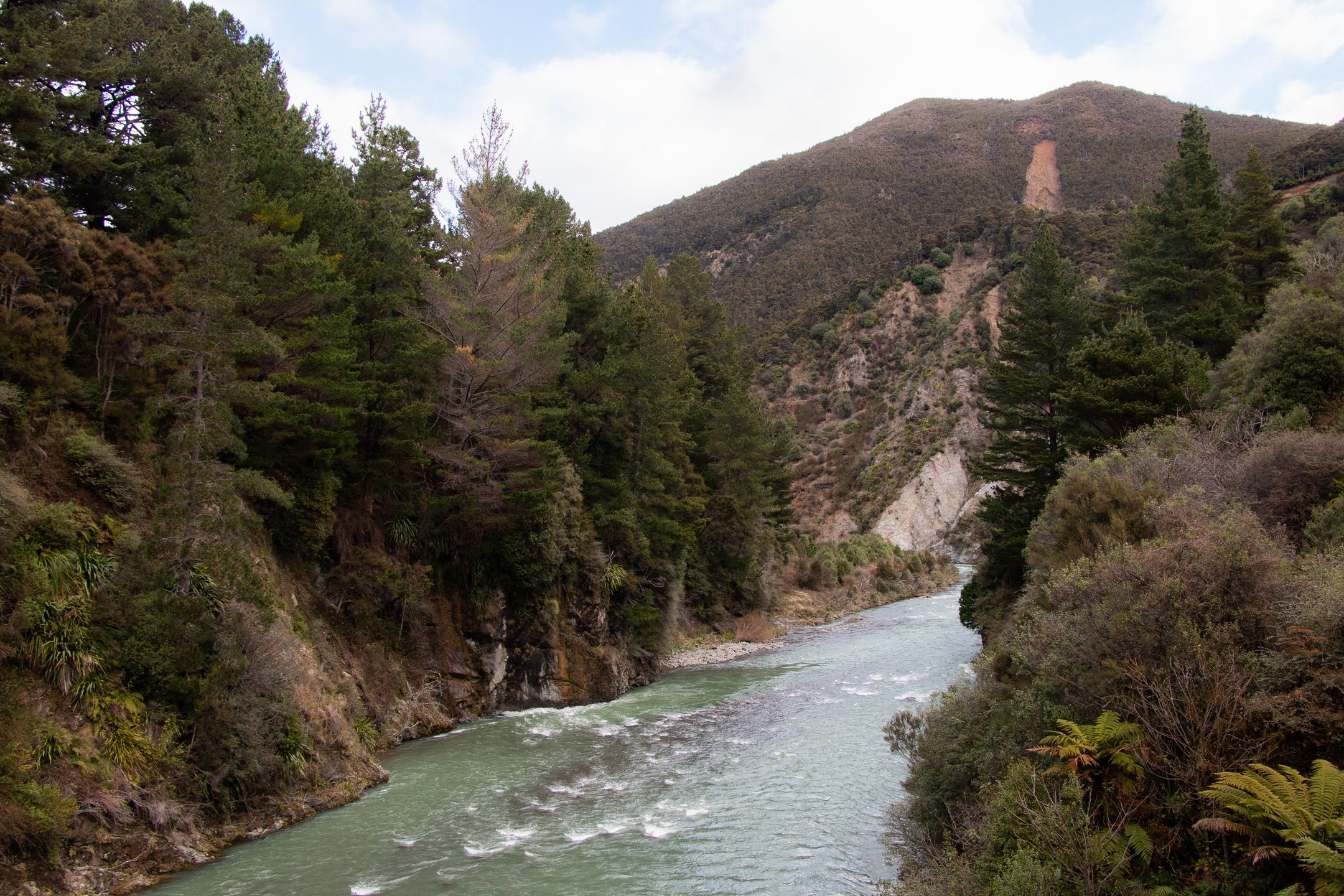
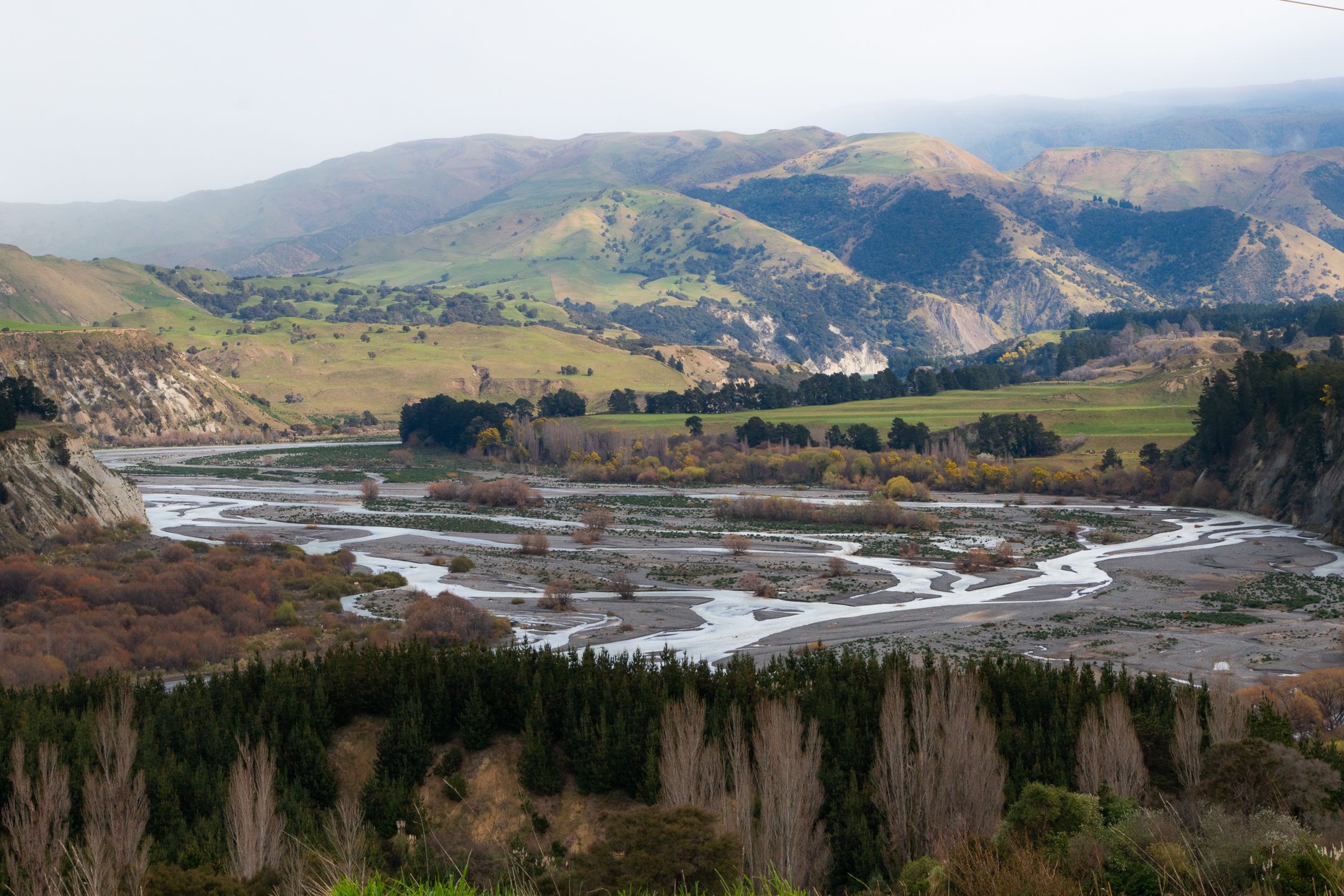
High up in the Kaweka ranges, on the fringes of the Central Plateau, two icy streams converge among clumps of golden tussock to form the headwaters of the Ngaruroro River.
For 100 kilometres, the river slaloms through a steep, beech-clad gorge, gathering size and force with every new confluence.
When it roars out of the gorge at Whanawhana, on the edge of the Heretaunga Plains, all that energy fans out into a braidplain up to a kilometre wide.
Riffles, deep pools and shallows provide habitats for birds, insects and fish, and slow the water’s meandering path.
But as it continues downstream through Hawke’s Bay, and enters the Heretaunga Plains flood protection scheme, the river starts to change.
First willows, then gravel extraction, and finally a network of stopbanks and flood diversions, gradually reshape it into a single channel that skirts settlements and towns on its way to sea.
Recent analysis estimates the Ngaruroro has been steadily and deliberately restricted to half the space it had in the 1950s.
This decades-long confinement worked well - until it didn’t.
On 14 February, 2023, the Ngaruroro breached flood protections in over a dozen places, combining with floodwaters from the Tutaekurī River to the north to swamp the settlements caught between the two: Ōmāhu, Waiohiki, Pākōwhai.
Urgent work has mostly restored the scheme, and thoughts are now turning to future upgrades.
But a growing cross-section of locals and experts say boxing the Ngaruroro in has heightened the flooding risk when it does overtop, and is also affecting precious groundwater levels and habitats.
They say it’s time to let the river breathe again.
Ngaio Tiuka is really not a morning person and this morning is really biting.
He worked late last night and his phone won’t stop buzzing.
Bearing a mug of coffee that threatens to wobble over the brim, he leads the way through Taikura House: a squat, concrete building on the fringes of Hastings town centre that’s headquarters to Ngāti Kahungunu, the country’s third-largest iwi.
Tiuka is director of the iwi’s Environment and Natural Resources unit, and in a small office he shares with the unit’s sole other staff member, Shade Smith, every surface is covered in maps.
Pinned to walls and spread out on the desk and an adjacent table, they show the Ngaruroro River and surrounding land in varying permutations of geography.
One is marked up with hand-written notes and symbols, the product of a hui the previous evening at Ōmāhu, one of several ancestral Ngāti Kahungunu marae along the banks of the Ngaruroro.
February 2023
February 2023

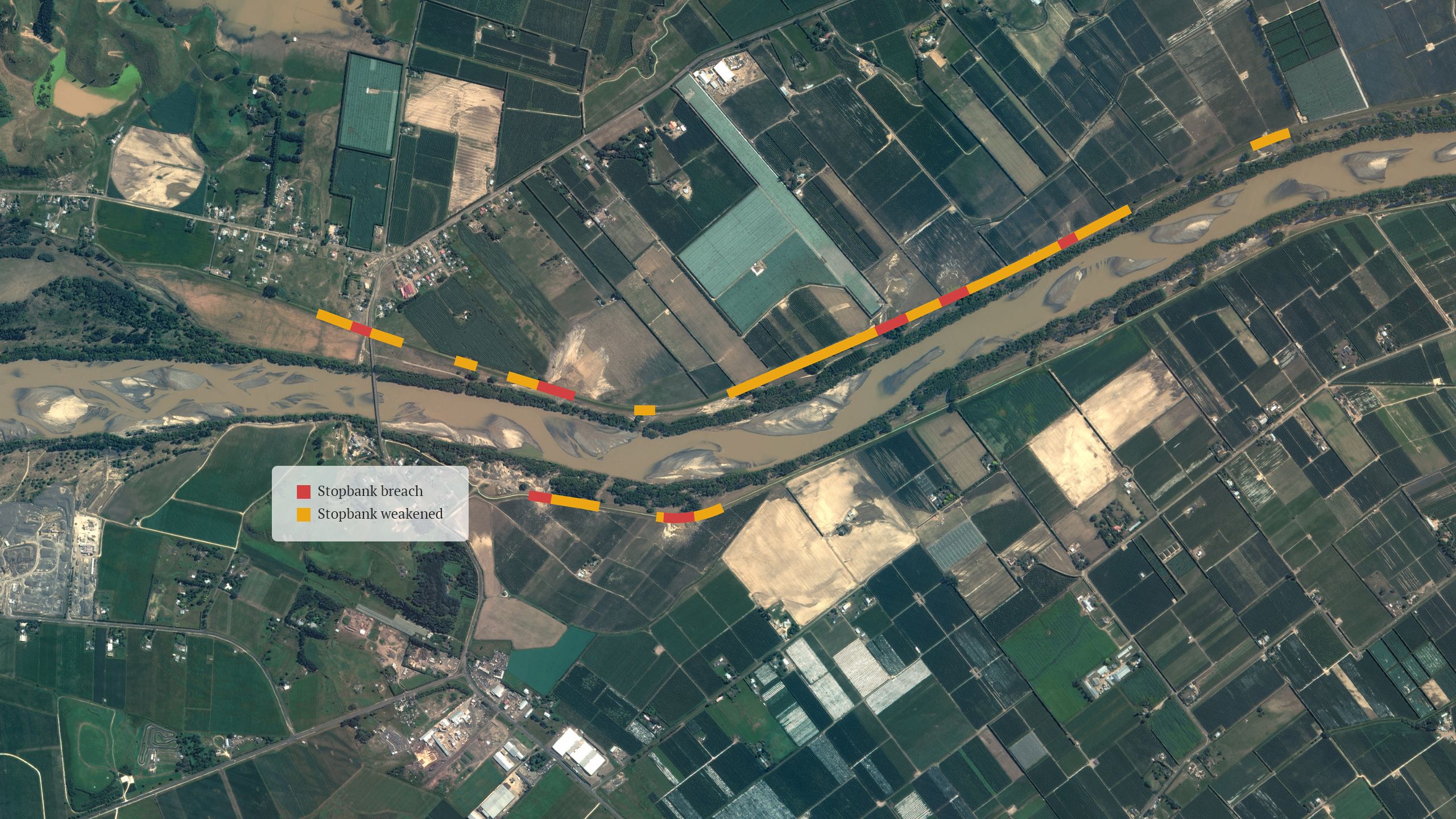
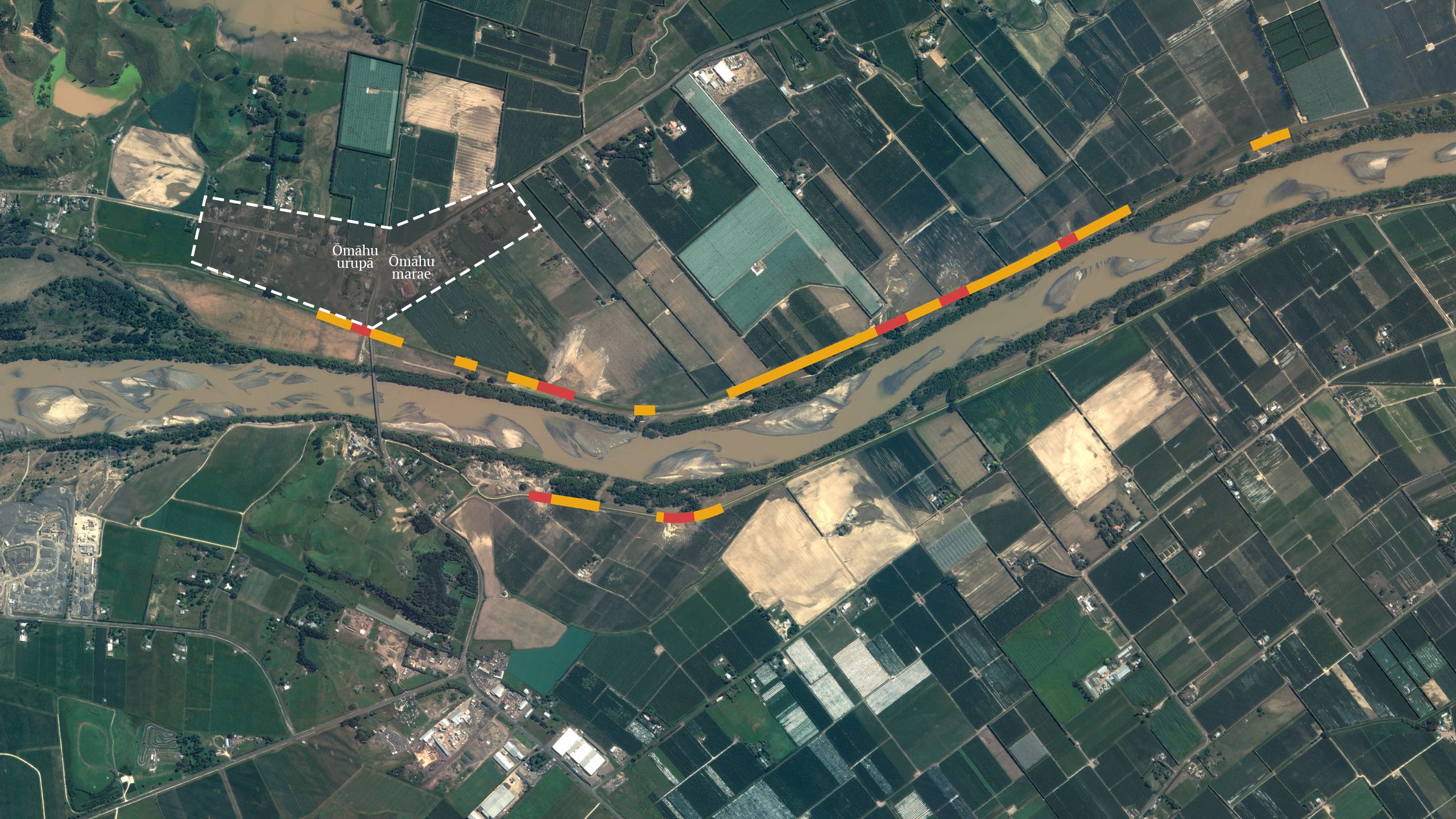
The river tore through flood defences here during Cyclone Gabrielle.
It breached or weakened stopbanks in eight places near Ōmāhu and the settlement of Fernhill, including one “massive” breach just downriver, Tiuka says.
He grabs one of the maps. “If that breach happened [a few hundred metres upstream] these houses would have been flattened.”
As it happened, many people’s homes were still flooded, along with Ōmāhu marae and its neighbouring urupā.
“The [river] narrowing increases the velocity, and that can just carve through our stopbanks like a hot knife through butter,” Tiuka says.
An independent review of the scheme’s performance during Cyclone Gabrielle found it came dangerously close to flooding Taradale, home to 13,000 people.
That review concluded that, once stopbanks were breached, there was no secondary line of defence to protect the 100,000 people living on the Heretaunga floodplain, or even modelling to show how and where floodwaters would move. Basic physics dictated that upstream areas would flood before downstream ones. Everything after that was a guess.
Tiuka’s role is helping hapū to consider how the river might be managed in future, and then advocating for their interests to the regional council and others.

Ngaio Tiuka has spent years researching the Ngaruroro for his iwi, Ngāti Kahungunu.
Ngaio Tiuka has spent years researching the Ngaruroro for his iwi, Ngāti Kahungunu.
“Our approach with the whānau is, we’ve got a river here - how could we reimagine its management? Where are the stopbanks? Where do you let the active flow, considering there's homes here, there's this crop here, there is the Army base here, there's Treaty settlement land there, there's paddocks, you know, all these considerations.”
To understand why such a re-imagining might be necessary, you have to know how the present came to be, Tiuka says.
“I’m going to go way back.”
It’s a story in four parts: the river in its raw, natural state; the things we’ve put into it; the things we’ve taken out; and the walls we’ve built around it.
Greed for land and resources played its part. Other changes happened for reasons that seemed solid at the time. But there is one inescapable truth: this river has drastically altered according to human will, and its future is in our hands too.
I. The River
A braided river is what it sounds like: multiple twisty, sinuous channels that diverge and re-converge across a wide braidplain.
Waggling across the landscape like fire hoses, they disgorge gravel and sediment from the mountains as they go, creating a swathe of fertile land in the process.
The Ngaruroro is one of a few naturally braided rivers in the North Island - some classify it as semi-braided.
It’s rare for an entire braidplain to be underwater. The main channels can shift back and forth over time, sometimes by hundreds of metres, or trickle under the gravel for a while before popping back up.
Channels might remain dry for decades, and even become vegetated with grasses and shrubs, until they come to resemble land.
But all that changes in a flood, when the river reclaims its full course, stripping away and reworking everything in its path.
Heretaunga mana whenua have long had settlements alongside the Ngaruroro and its tributaries, which were important mahinga kai (freshwater fish) sites, as well as highways for travel and trade.
“But we are pragmatic and so a lot of those settlements were around the edges of the floodplains or on hills, like Tanenuiarangi Pā for Kohupātiki, Pukemokimoki Hill,” Tiuka says. “There were refuges - we’ve moved if we’ve needed to.”
When European settlers arrived in Hawke’s Bay, they too were struck by the fertility of the plains.
They soon discovered it was a double-edged sword. “Floods caused damage to crops and washed away livestock, buildings, roads and fences,” a later Waitangi Tribunal report explained.
“The history of the lower reaches of the [rivers] from the 1860s, therefore, is dominated by the desire of Hawke’s Bay settlers to physically control the flow and direction of water.”
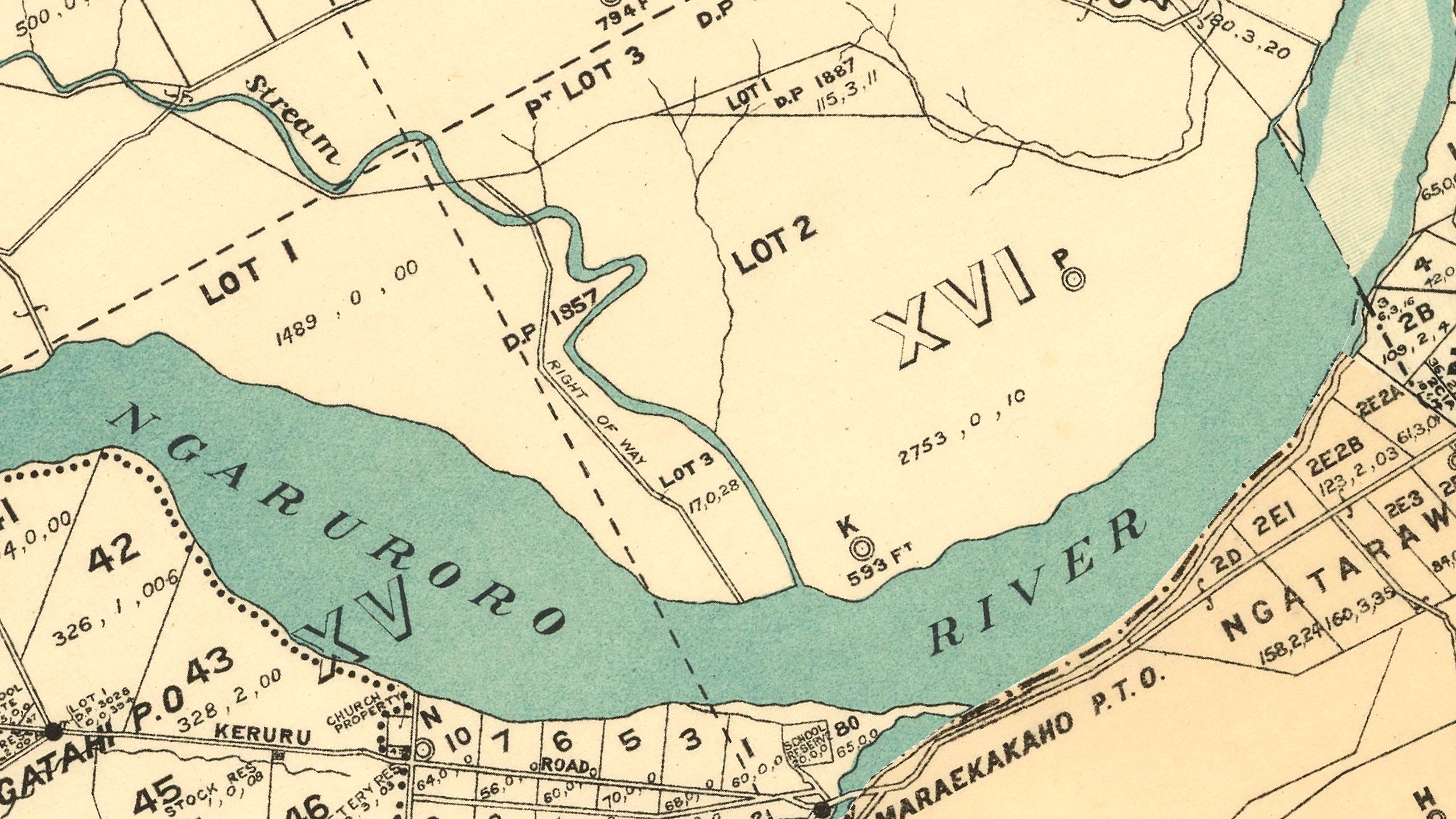
After a huge flood in 1867, the government passed the Hawkes Bay and Marlborough Rivers Act, giving it power to alienate land for river control purposes. Later legislation gave new catchment boards similar abilities.
As late as the 1980s, Māori land was still being acquired against the wishes of local hapū for flood protection schemes, in some cases cutting off their river access.
Early on, though, there was no overall management scheme, Hawke’s Bay regional councillor Sophie Siers, who chairs the council’s environment and integrated catchment committee, says.
“[Catchment boards] were building around what individual landowners had started to build themselves. So it was pretty hotch-potch… You wouldn't do it like that [now], but that's what they were working with.”
It‘s this gradual, piecemeal loss, combined with major flood protection work the regional council carried out in the 1980s, that Forest and Bird and Sustainable Hawke’s Bay wanted to measure.
Earlier this year, the two groups teamed up to map the full extent of changes.
“What a lot of people don't realise in Hawkes Bay is just how braided that river used to be,” Forest and Bird rivers advocate Tom Kay says. “We wanted people to understand what has been lost.”
II. Encroachment
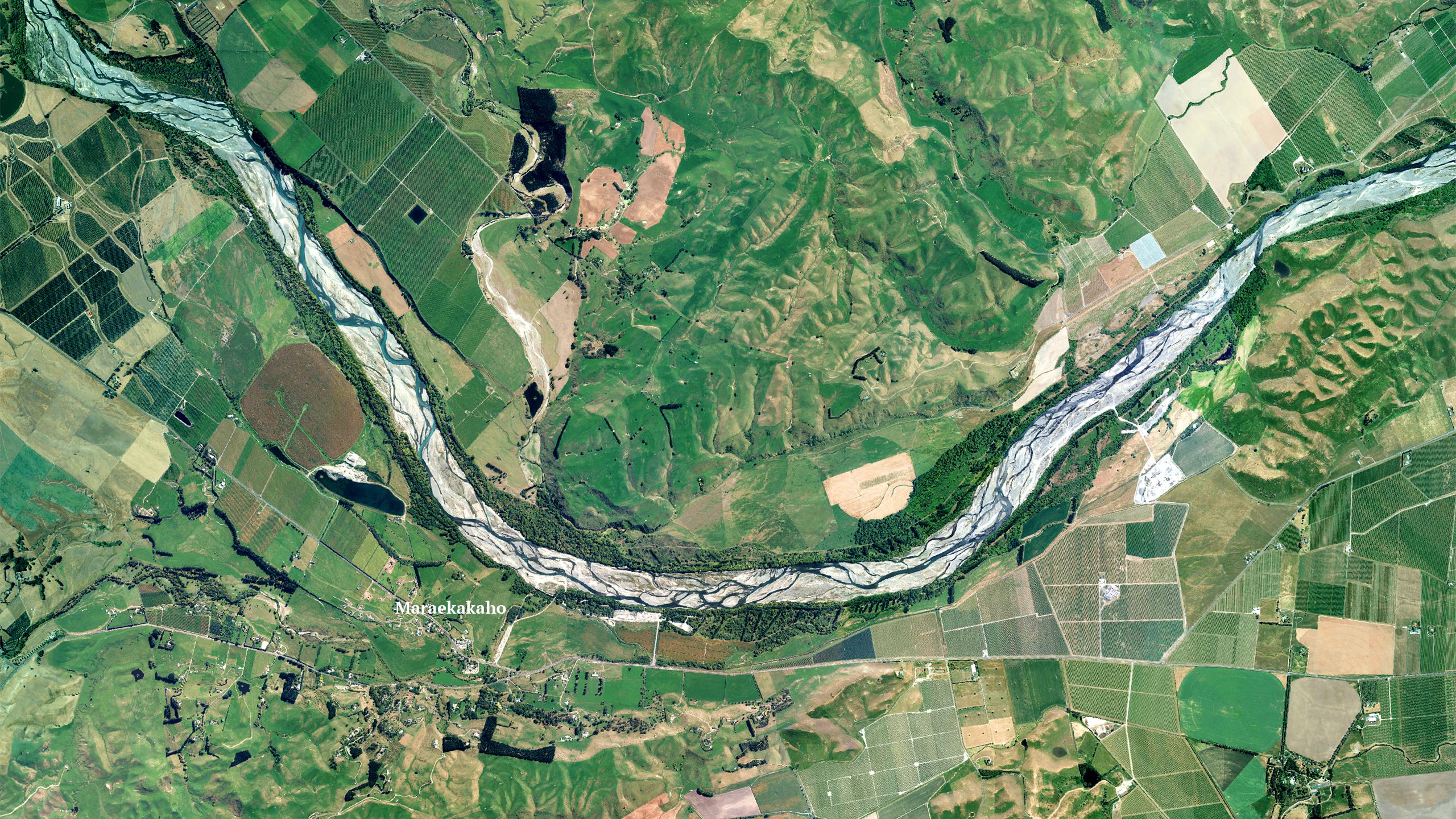
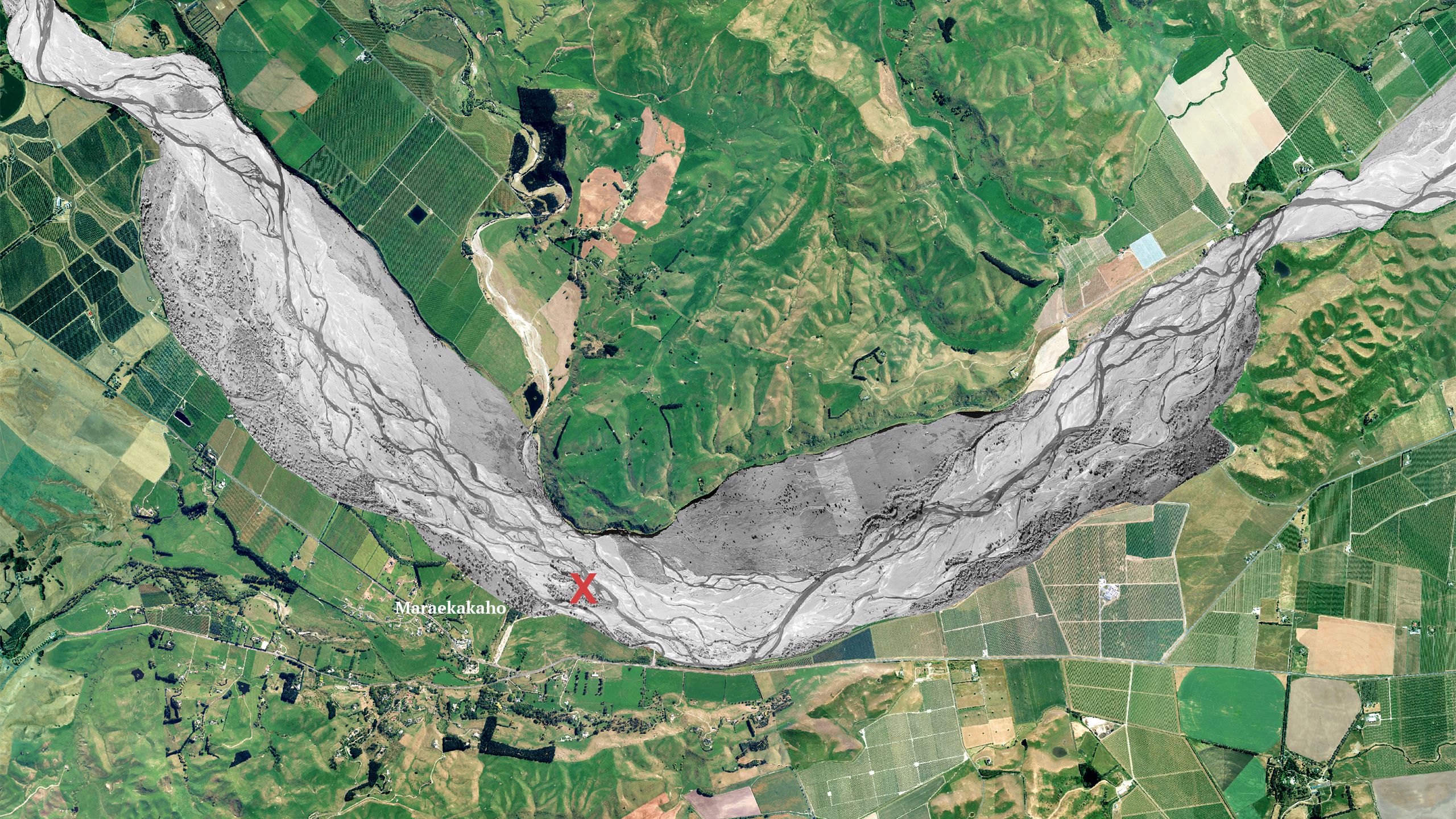
2022
2022
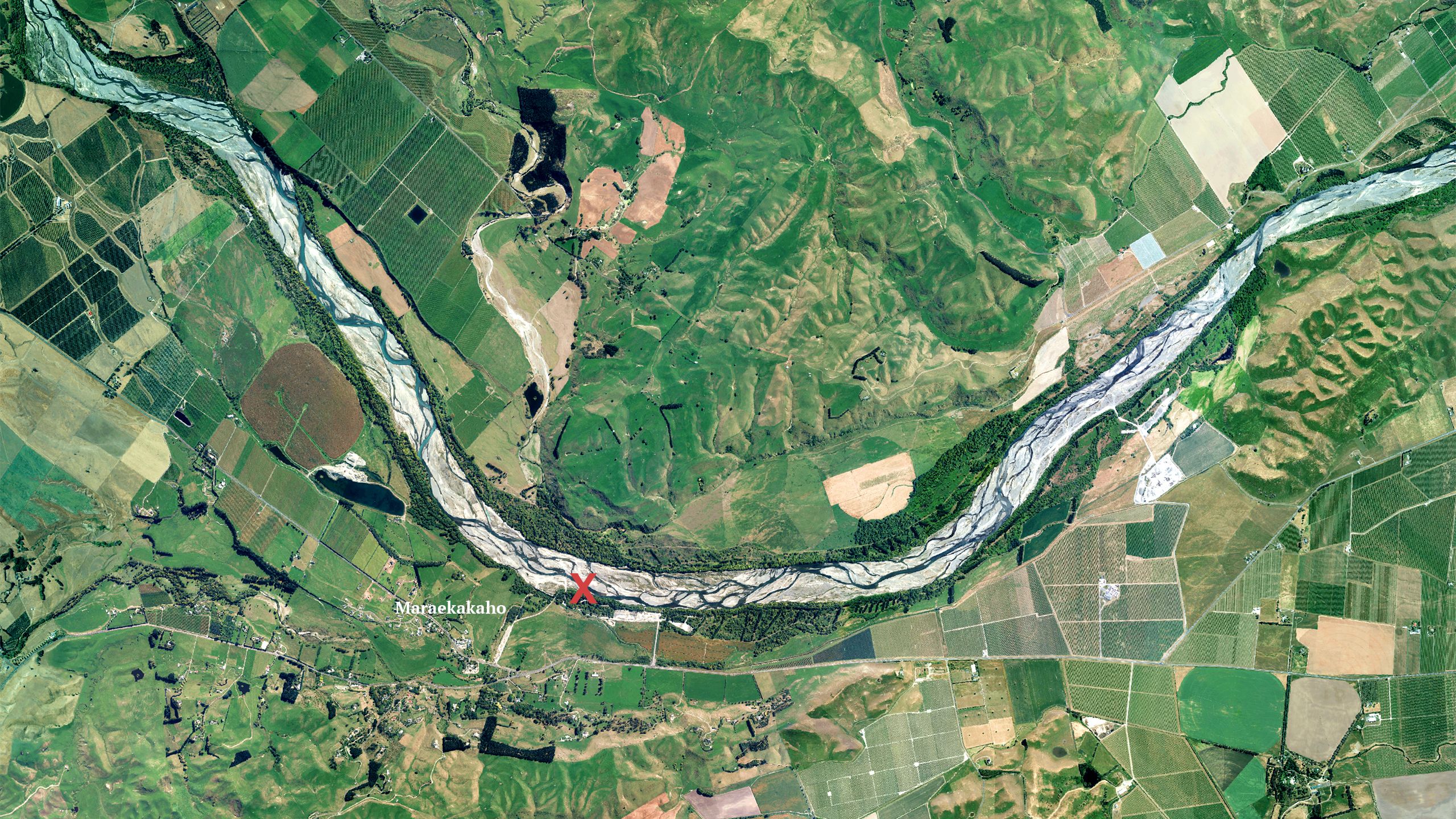
2022
2022

River-smoothed pebbles grind beneath Michael Shand’s boots as he walks to the edge of a channel and unfurls a print-out.
“So this is the 1950s version - we’re on the cross,” he says. “We’re literally in the middle of the river.”
It’s only a short distance back to the white ute parked among willows at the end of a dusty access road, but the aerial imagery Shand is holding shows a shingle braidplain that extended hundreds of metres further back. There was no access road here then - just river, and river stones, and some sparse trees and bushes.
Now, willows and poplars form a physical and visual barrier up and down the remaining river corridor. Sediment and gravel caught in their dense root structure have filled in the braidplain behind them, transforming river into land.
A geospatial analyst at Sustainable Hawke’s Bay, Shand has used historical maps, aerial imagery and LiDAR (which can measure the depth of the riverbed) to mark out the river margins and analyse how much the braidplain has been transformed along the 43-kilometre section from Whanawhana to the sea.
His analysis puts the area of braidplain lost to modification and other river changes since 1950 at 54 percent.
In addition, Shand used an AI model to identify trees in the former braidplain, counting 6000 of them in just a two-kilometre section.
“Every set of roots is all holding the water back into this nice speedy channel over here.”
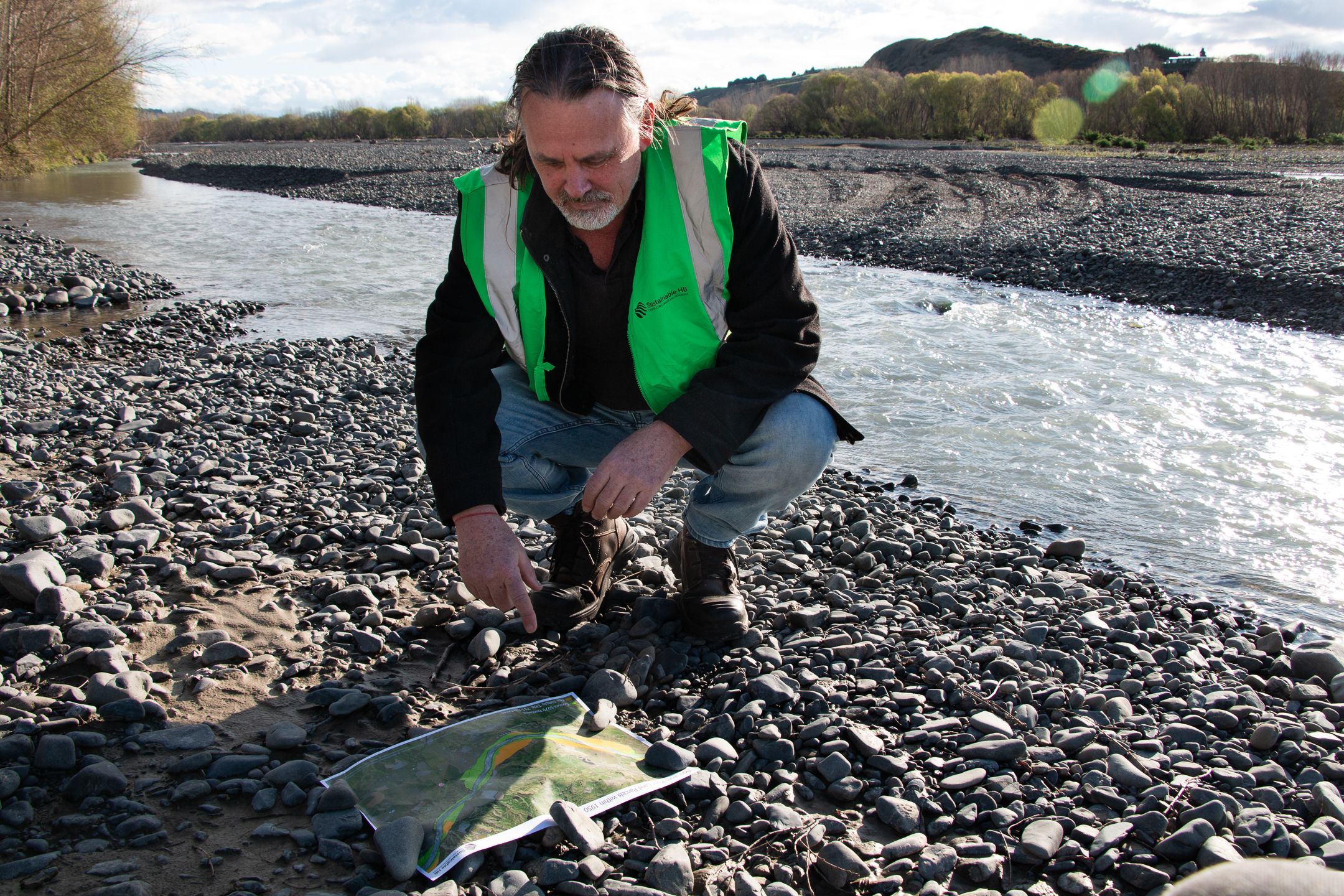
Michael Shand used historic aerial imagery and maps, together with more recent imagery and LiDAR to analyse the extent of braidplain loss.
Michael Shand used historic aerial imagery and maps, together with more recent imagery and LiDAR to analyse the extent of braidplain loss.
The planting begins in earnest just upstream of Maraekakaho, a small settlement on the Ngaruroro’s southern bank. This was once one of the widest sections of the braidplain, easily spanning a kilometre or more, but has been trained into a corridor about half that width.
The fast-growing willows act as erosion control along the ‘design width’ of the river, and as a soft barrier against flooding, Tom Kay says.
“You can grow heaps of these willow poles that you can then stick in the riverbed and or next to the river on the banks, in these lines, to create these buffers to kind of channel the river into that fairway.”
The problem, as he sees it, is that willows have been used “to claim parts of the riverbed that should never have been claimed”.
As recently as 2020, there were new council plantings in parts of the active gravel of the river, he says.
“[The council] shouldn’t be doing this. If anything, they should be backing off.”
Richard Measures, a hydrodynamics scientist and chair of Engineering NZ’s Rivers Group, says willows can be “an incredibly effective tool” for managing flood risk, particularly for protecting stopbanks.
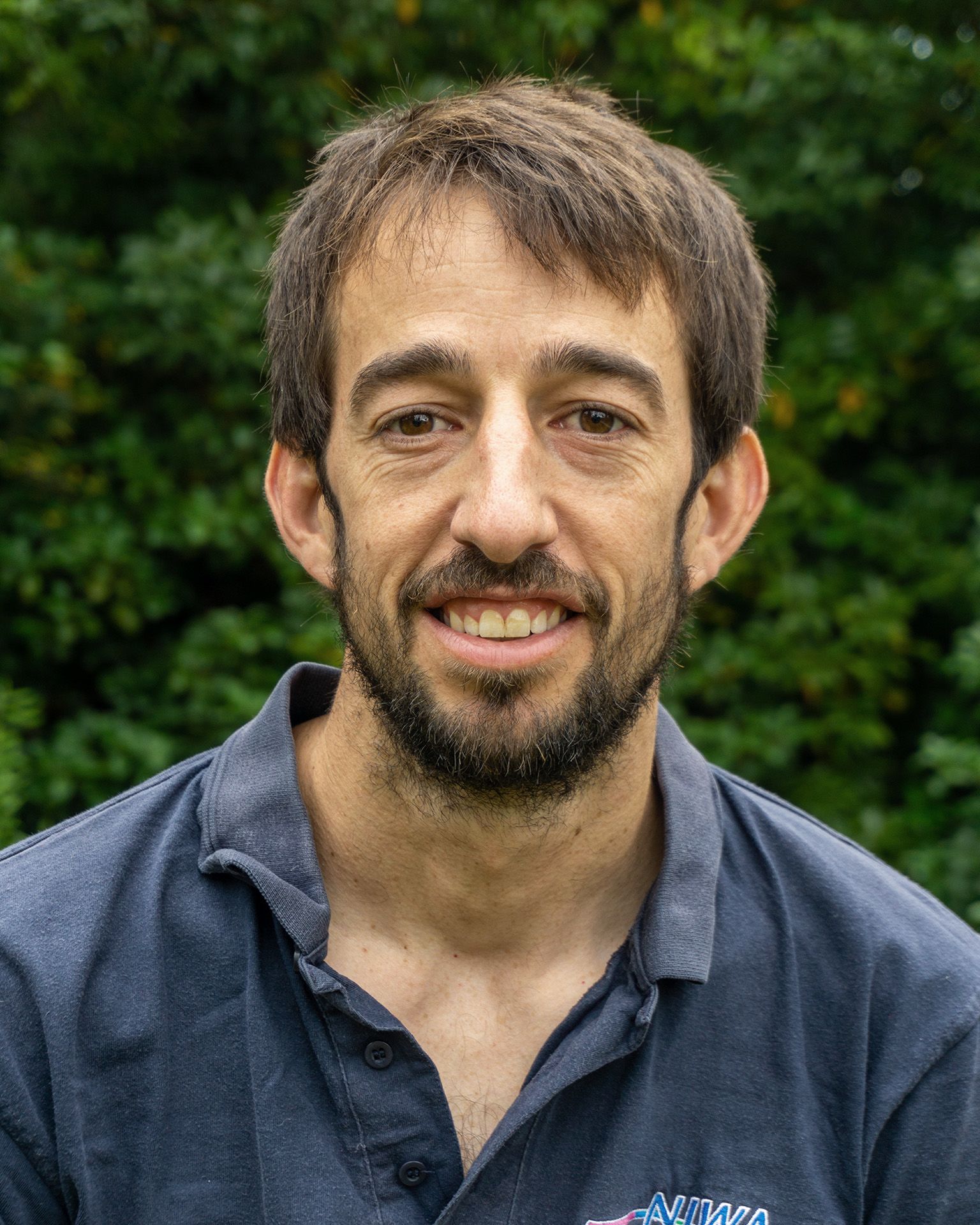
Richard Measures. Photo: Supplied/NIWA
Richard Measures. Photo: Supplied/NIWA
“In Cyclone Gabrielle, all of the stopbank failures we saw were due to overtopping of the stopbanks. Nowhere did the river break through the willows and erode through the stopbank. That’s a real risk that’s been prevented by those willows - they’ve done their job.”
But, like Kay, he sees the excessive narrowing of the Ngaruroro and other rivers as an issue. There is growing consensus globally that ‘making room for the river’ - a concept that came out of the Netherlands - is best practice.
“If there’s a narrower braidplain or floodplain there is less space for the water to spread out,” he says.
“If we had had a wider braidplain in the stopbanked reaches, the stopbanks wouldn't have needed to be so high, which would have meant when they were overtopped the consequences of failure wouldn’t have been so bad because you don’t have all that stored energy behind a really high stopbank.”
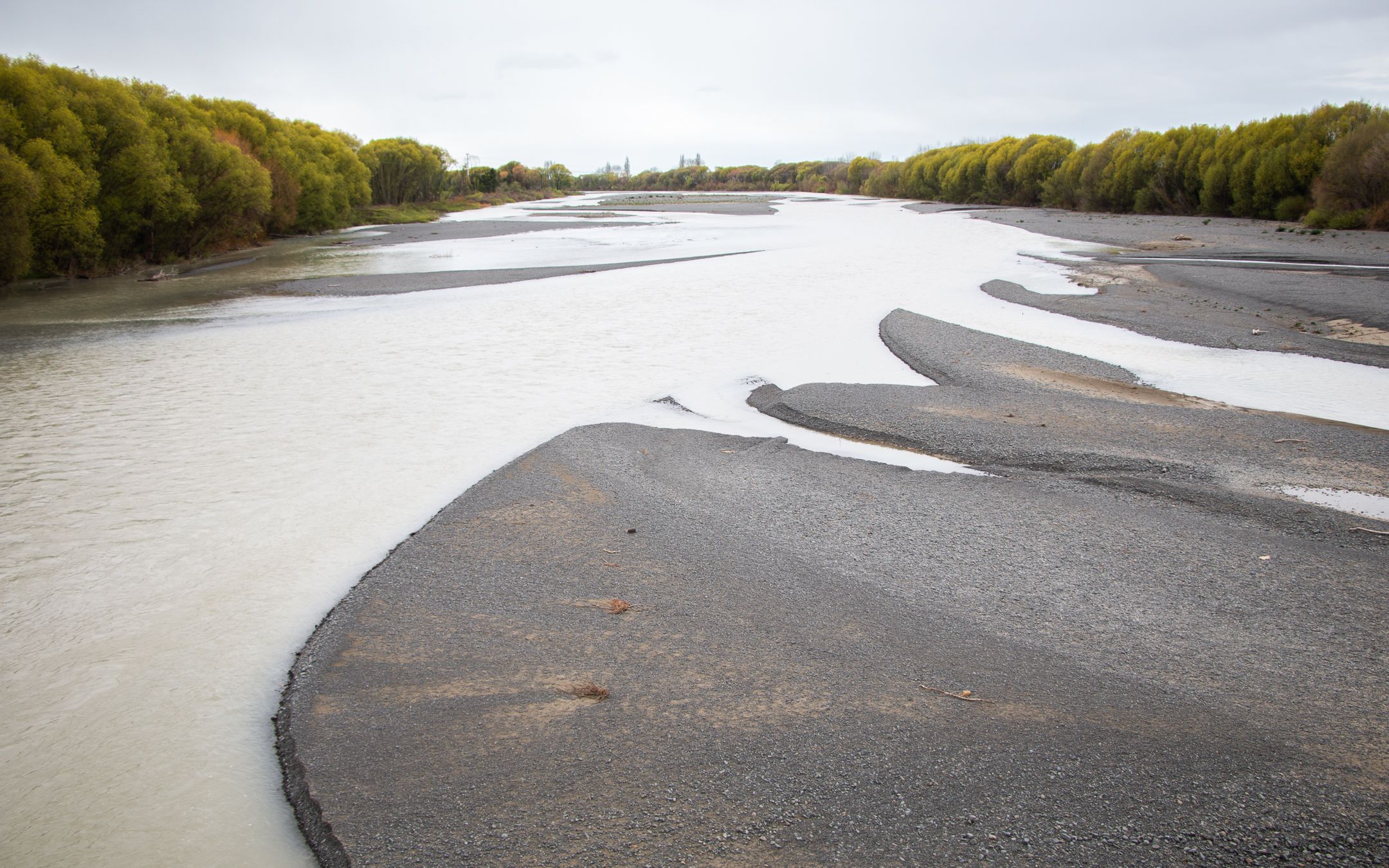
The Ngaruroro River viewed from the Fernhill road bridge, near Ōmāhu. Willows have been planted along the river over the years to train it into a corridor.
The Ngaruroro River viewed from the Fernhill road bridge, near Ōmāhu. Willows have been planted along the river over the years to train it into a corridor.
The willows, which grow “aggressively”, have also contributed to a binary habitat, rather than the high level of diversity found in unmodified braided river systems, Measures says.
“It’s either water and bare gravel, or it’s dense willows.”
Willows - perhaps in combination with native plantings - would still have a role to play even if the river was widened or otherwise managed differently, he says.
“There would just be a wider braidplain in between the two lines of willows, which means you get more diverse habitat, more groundwater recharge, more floodwater conveyance.”
III. Extraction
As the Ngaruroro continues downstream it passes several quarries, nestled behind the willows, on what used to be braidplain in the 1950s.
The quarries extract shingle and gravel from the riverbed, crushing it into aggregate used for roading and other construction and landscaping projects.
The gravel extraction serves other purposes, though.
As the river levels out between Maraekakaho and Ōmāhu, it starts to deposit all the gravel it’s conveyed down from the ranges.
Left to its own “chaotic” devices, the Ngaruroro would do what it did for centuries prior to human modification, Richard Measures says.
“The river would build up and then it would spill out and form a new channel to the coast - but we don’t really want that to happen because we’ve built farms and houses and infrastructure and so on.”
To keep the river and its braidplain in roughly the same place, a “sustainable” rate of gravel extraction is actually helpful, he says.
“Having said that, historically, gravel extraction has lowered the riverbed, because we’ve been taking out more than is naturally deposited there. It’s that balance.”
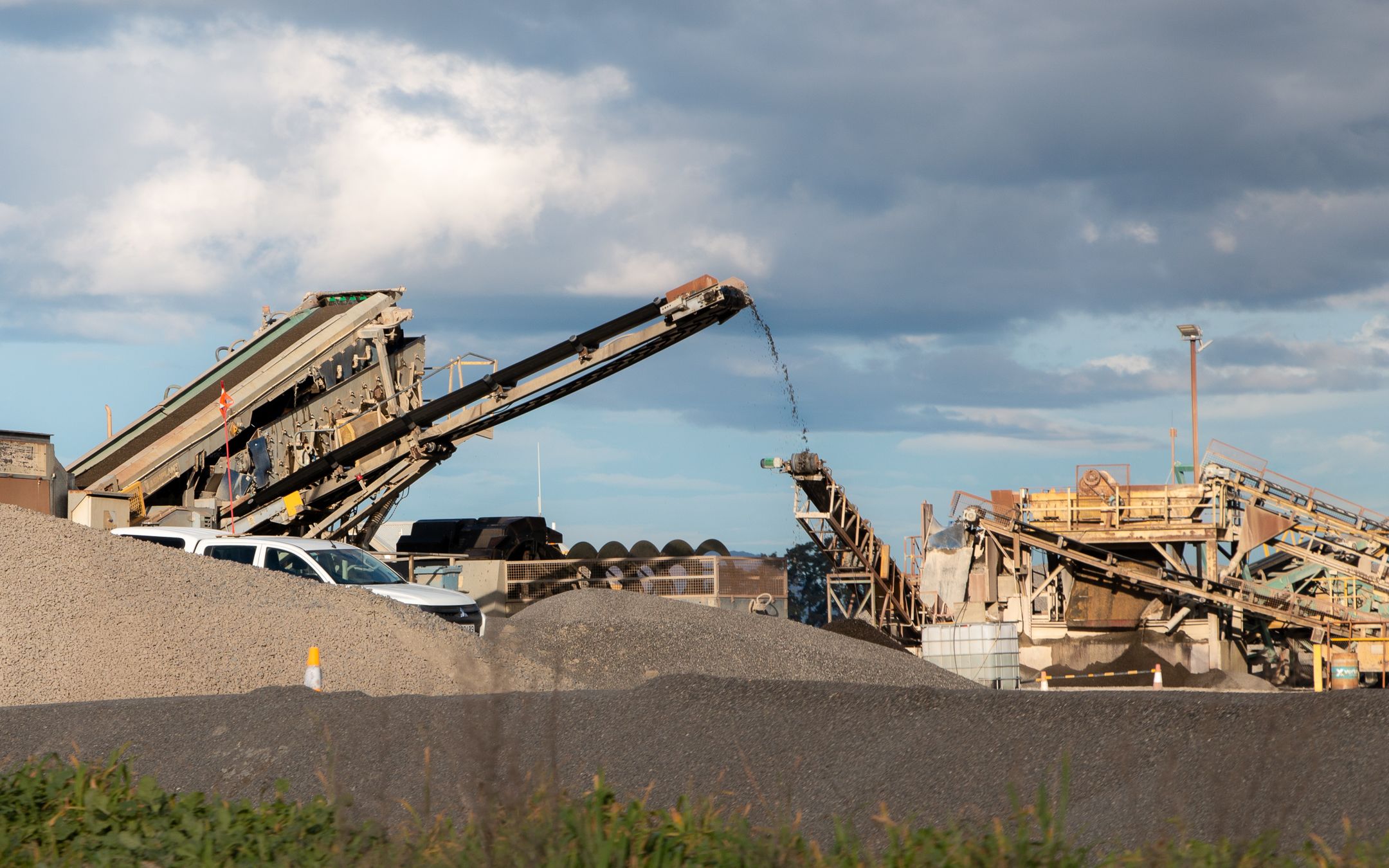
There are several quarries along the river that turn gravel and stones extracted from the riverbed into aggregate for infrastructure.
There are several quarries along the river that turn gravel and stones extracted from the riverbed into aggregate for infrastructure.
For the last five years, Measures, together with Lincoln Agritech hydrogeologist Scott Wilson and other researchers, has been examining this part of the riverbed and braidplain, to try to pinpoint what has caused declining levels in the Heretaunga aquifer lying beneath the plains.
As well as providing groundwater irrigation for the area’s lucrative horticulture industry, the aquifer is the town water supply to Hastings.
The researchers found the river feeds the aquifer in two ways. In stretches where it sits above the aquifer, the gravels of the braidplain store water, which then percolates down.
“If you narrow it, the river's got less area to leak from so your recharge rate to the aquifer gets decreased,” Wilson says.
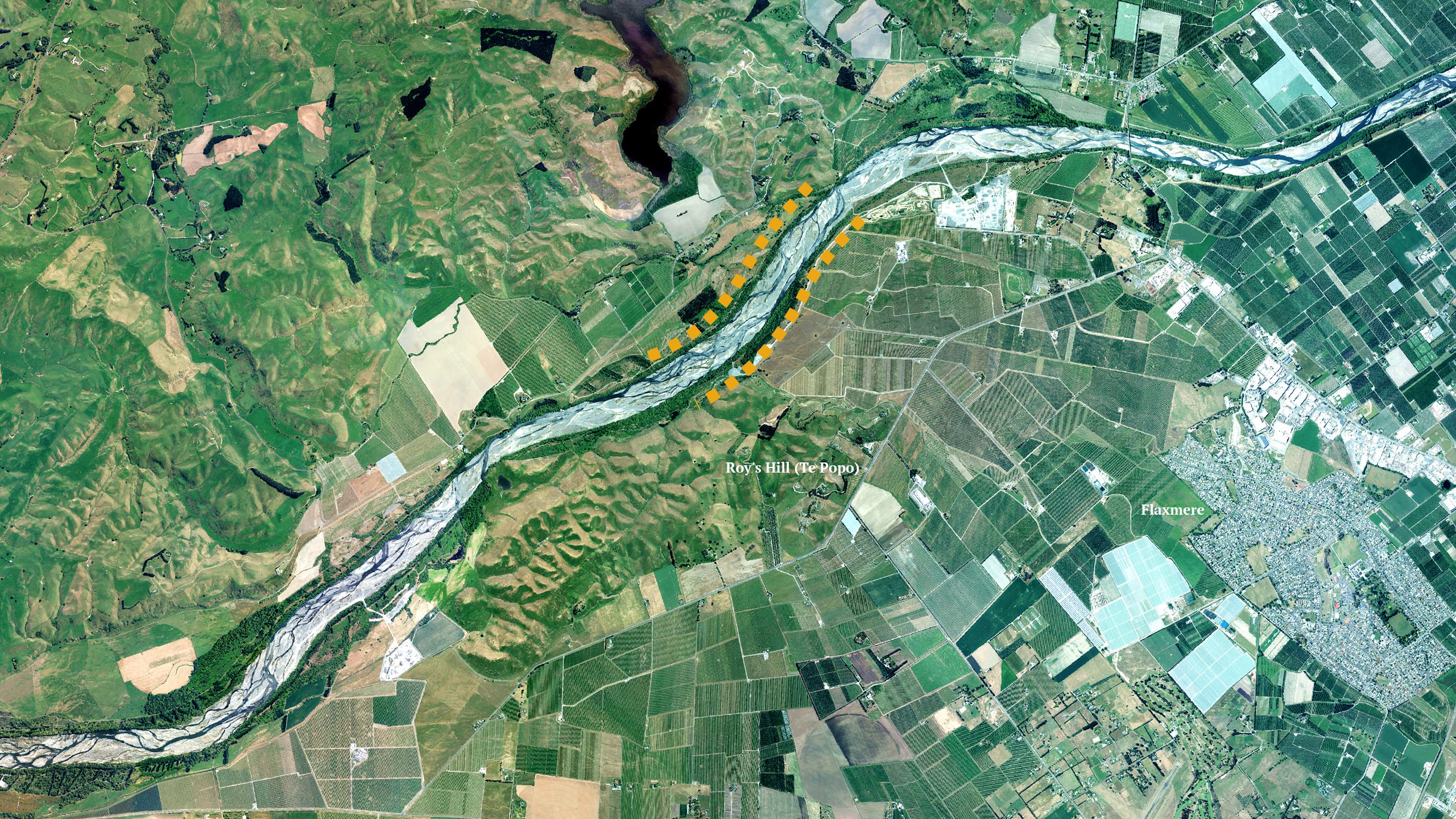
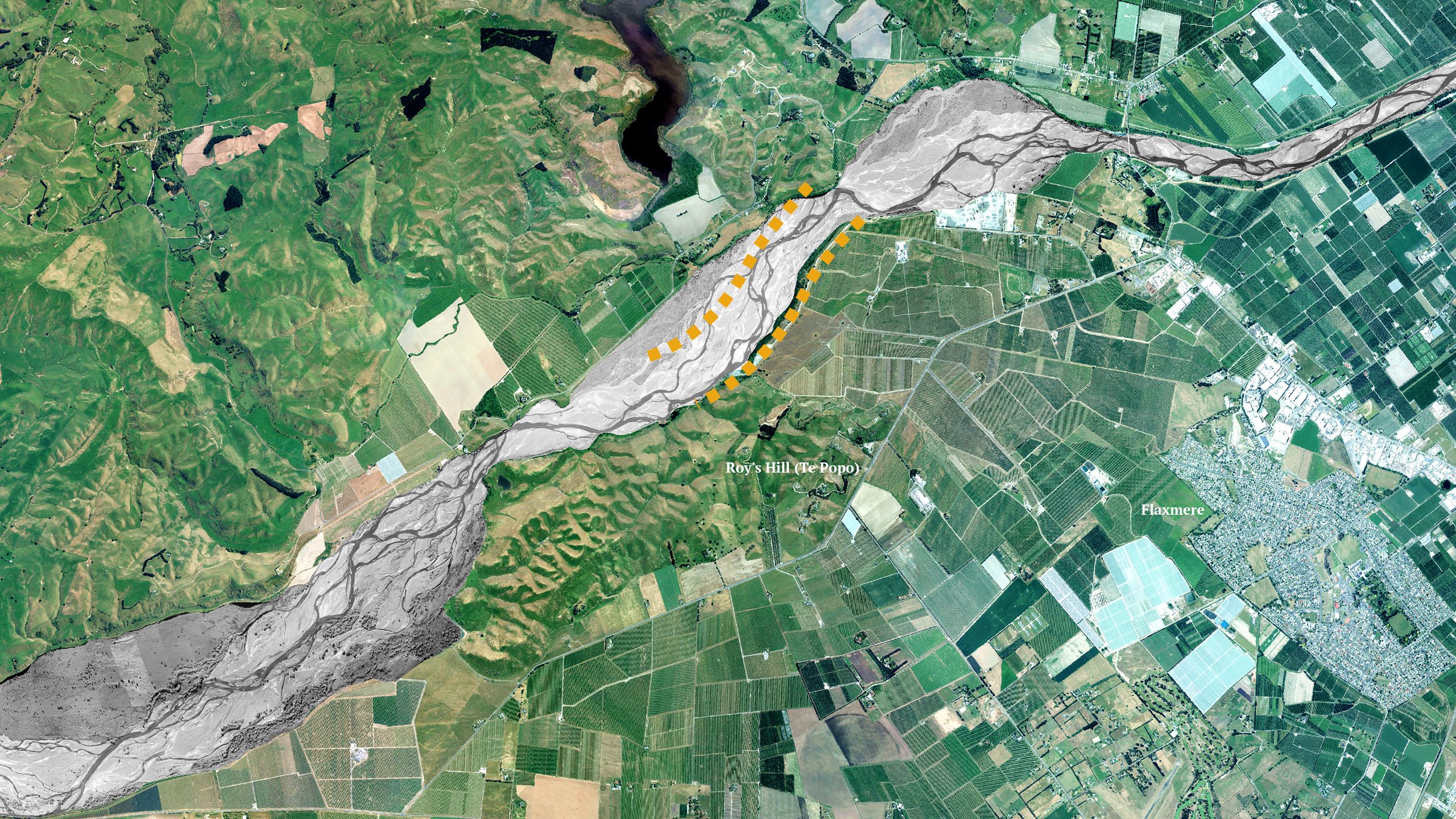
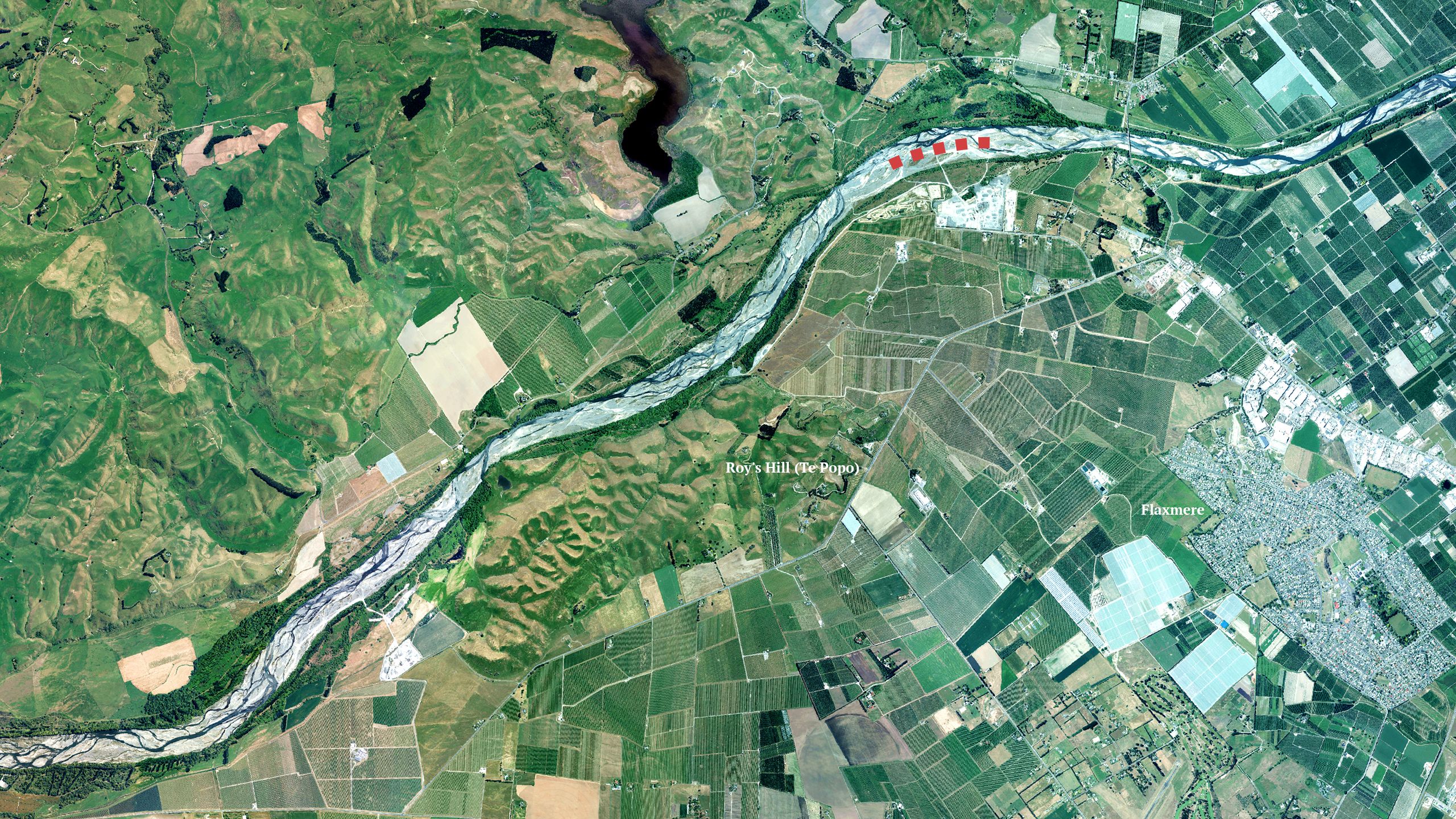
A huge amount of the water in the aquifer comes from a single recharge stretch along the Ngaruroro at Roy’s Hill.
This also happens to be a spot where the river has been narrowed over the decades to about 300 metres - still braided, but roughly half its former width.
“So if that was widened a little bit, even by like 100 or 200 metres, that would make a big difference to the recharge rate,” Wilson says.
In the second scenario, where the river sits within the water table, lowering the riverbed will also lower groundwater levels.
In some of these stretches, excessive gravel extraction appears to have lowered the riverbed by a metre or so on average since the 1980s, Wilson says.
“That's why you see this long-term decline in groundwater levels.
“So the response there would be to immediately reduce the rate of gravel extraction and if possible, to even allow the riverbed to come up a little bit.”
Gravel extraction would not have to end - in fact, according to the research group’s economic analysis, there could even be an immediate benefit to extractors, who could take from the river margins at Roy’s Hill to widen it.
Mike Glazebrook, who farms at Maraekakaho on land he’s lived on all his life, has seen the aquifer research and thinks there’s some merit to slowing the rate of gravel extraction, as well as potentially widening the river at certain points.
“I get the advantages for those reasons, that you’re spreading that water velocity out so it’s not so high up against the stopbank.”
As chair of the Ngaruroro Irrigation Society, though, he’s unconvinced that widening the river to feed the aquifer is a good idea.
“The problem that seems to have been overlooked there … is that it hasn’t looked at the effect on surface water,” Glazebrook says.
“You’re stuck with that once you’ve done it and if you find that you’re diverting too much surface flow into the aquifer then it’s very hard to go and fix.”
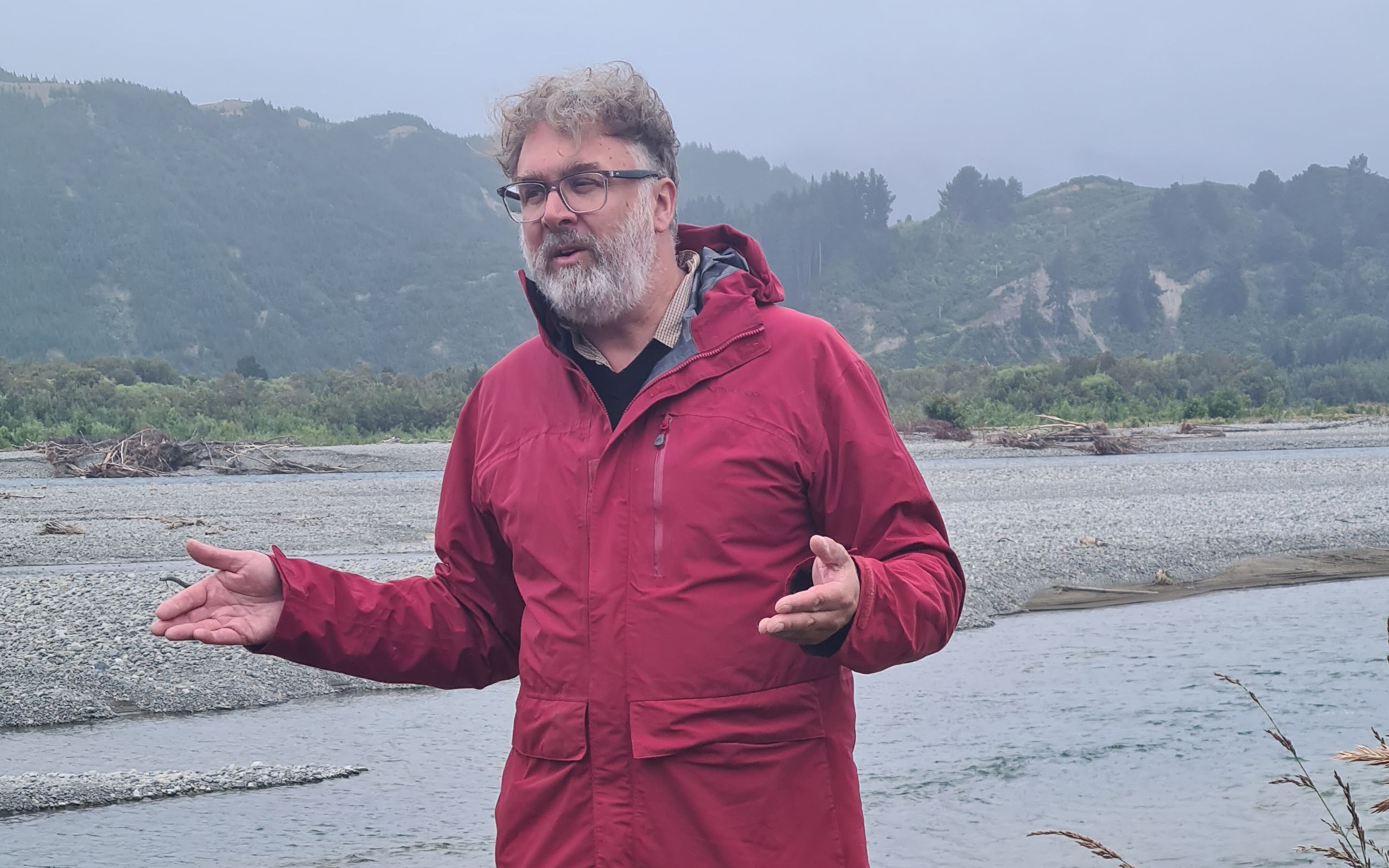
Lincoln Agritech hydrogeologist Scott Wilson has led a five-year research project into how the Ngaruroro braidplain interacts with the Heretaunga aquifer. Photo: Lincoln Agritech
Lincoln Agritech hydrogeologist Scott Wilson has led a five-year research project into how the Ngaruroro braidplain interacts with the Heretaunga aquifer. Photo: Lincoln Agritech
The four quarries RNZ contacted - Hirock, Tūpore Infrastructure, Winstone, and Holcim - either declined to comment or did not respond to email and phone requests.
Aggregate and Quarry Association chief executive Wayne Scott says the industry is aware of the research and “open to the discussion”.
Like Mike Glazebrook, his members want to know more about how the proposed solutions would affect the water table. “Water takes in the catchment have been oversubscribed for many years and are closely guarded. That has wide impacts for everyone including our sector.”
While building up the riverbed may make the water table deeper, it may also make adjacent land more prone to flooding and deplete aggregate supplies for infrastructure, he says.
“Quarry materials are already in short supply across New Zealand. The last thing that’s needed is to rope off existing sources, especially those with the benefit of reducing flood risk.”
Things get even trickier downstream.
IV. The walls
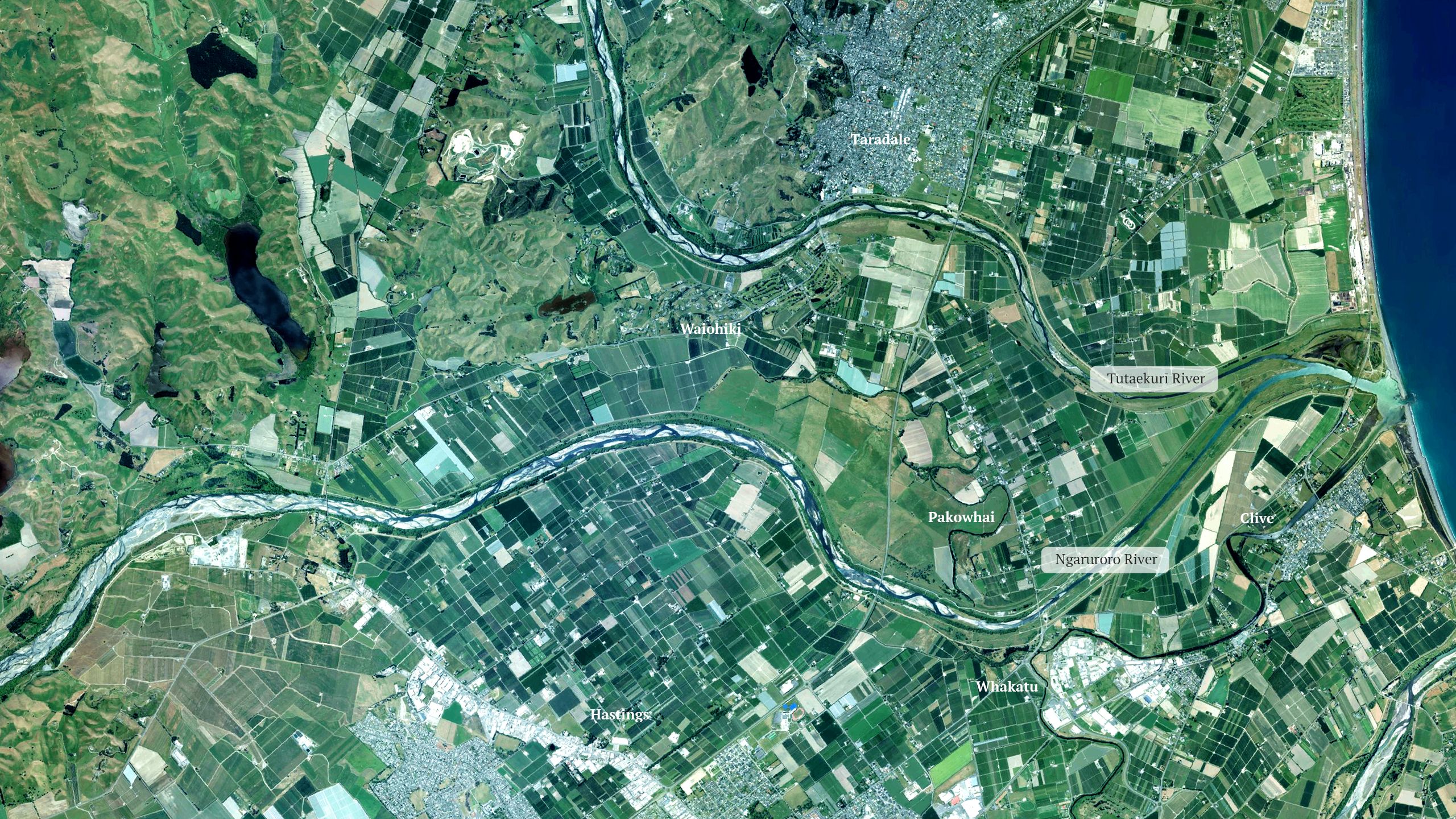
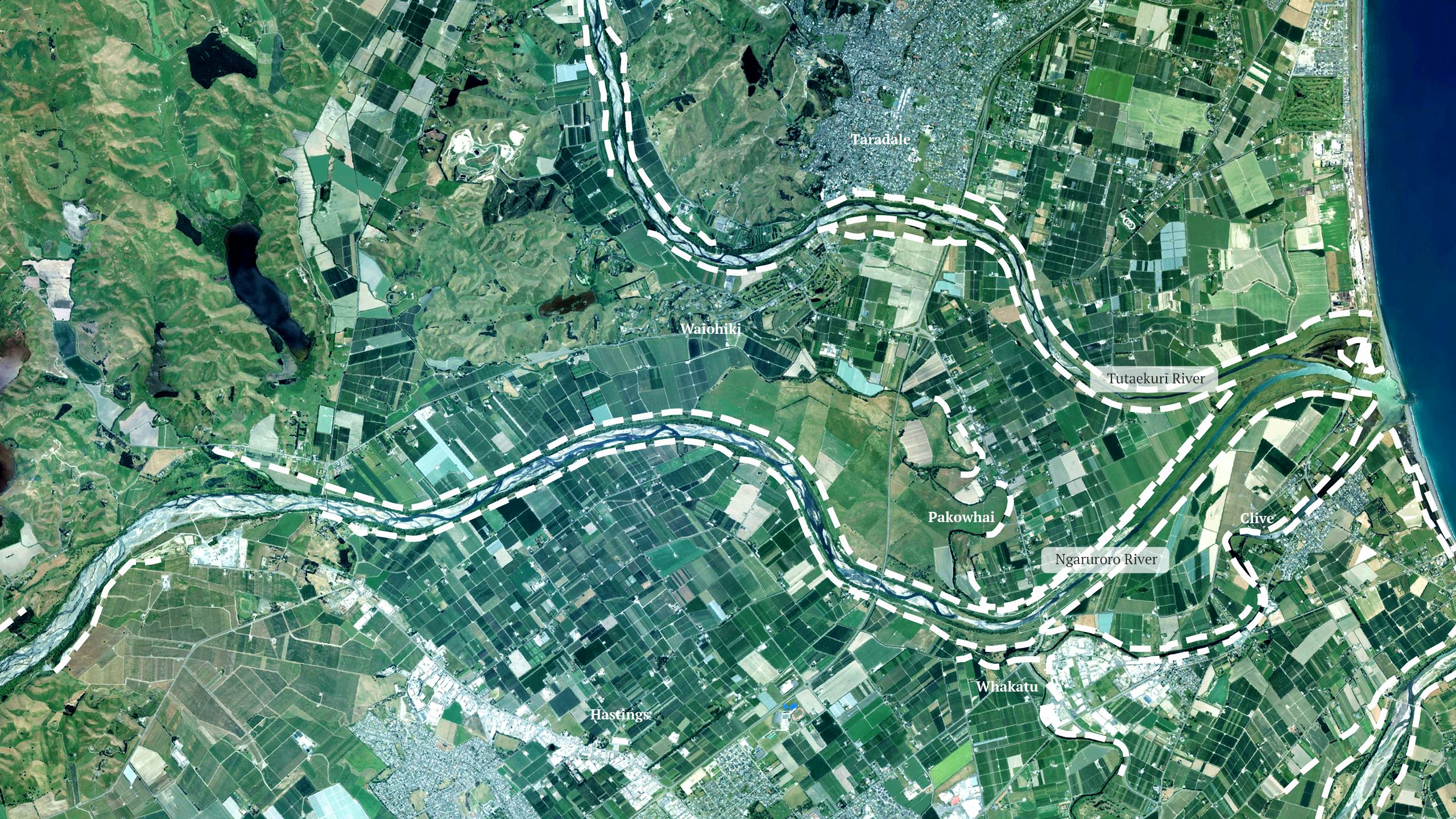
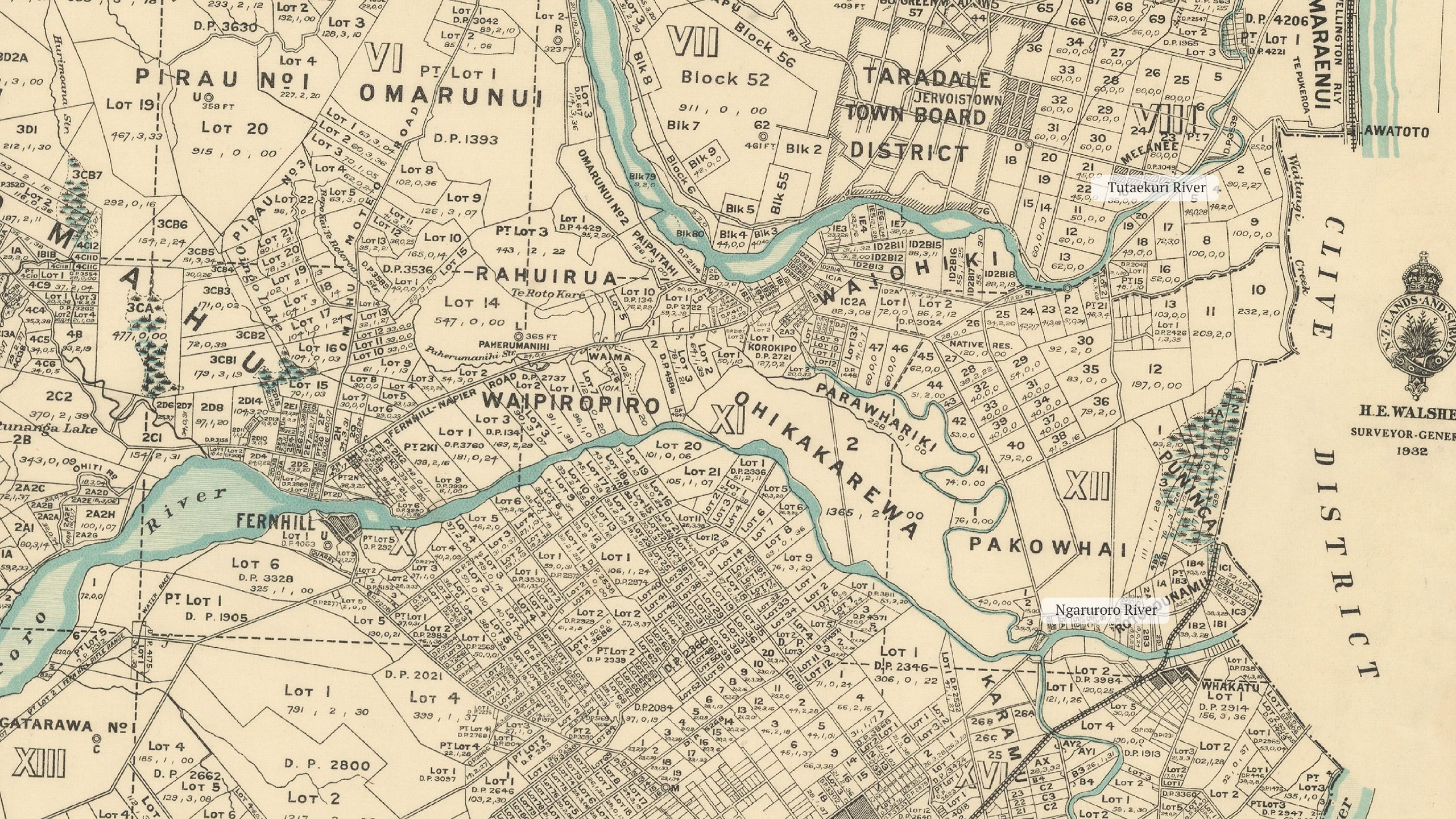

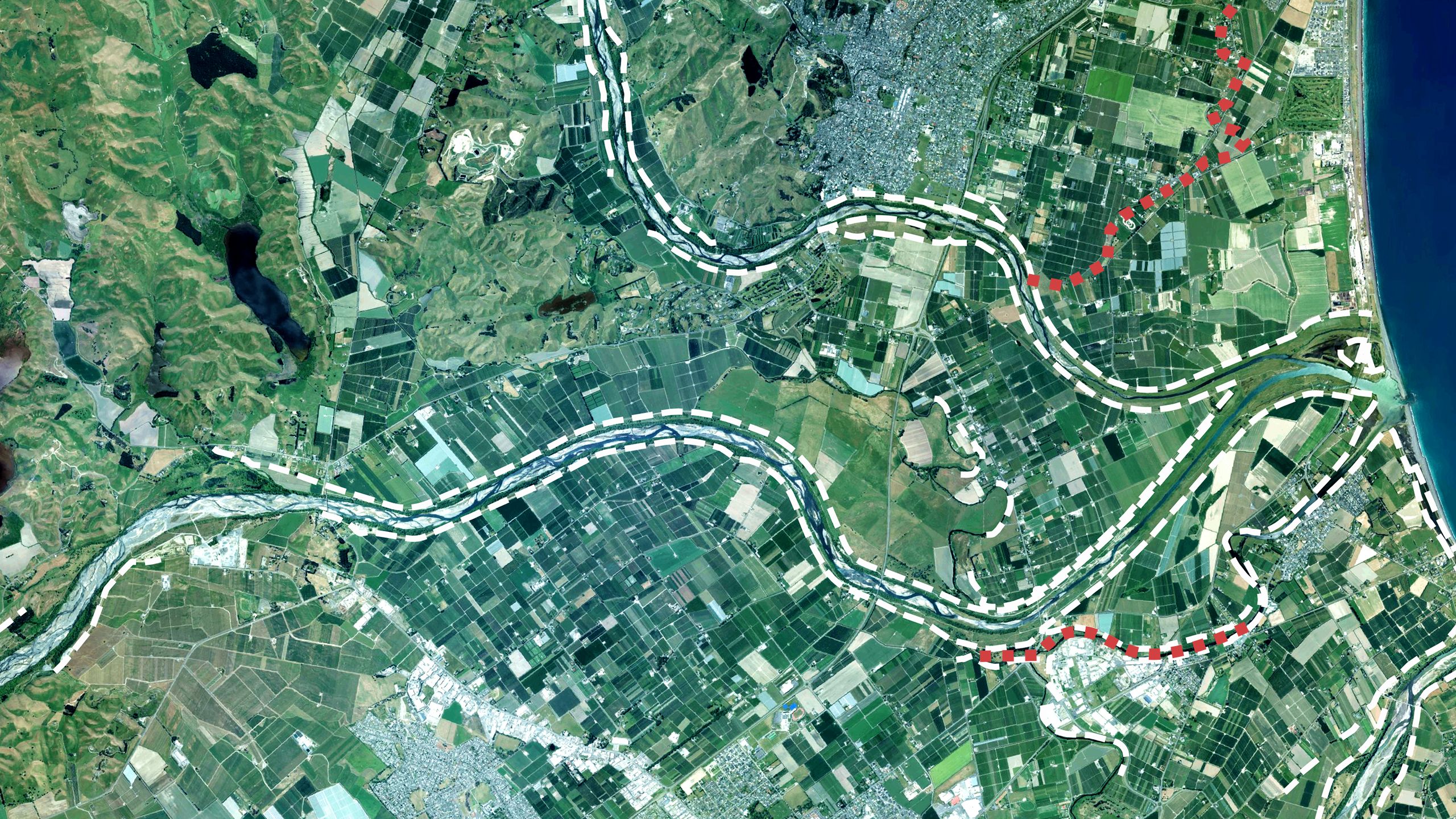
Just past the last of the quarries, the stopbanking scheme begins in earnest.
Starting in 1987, existing stopbanks from here to the sea were upgraded to meet a one-in-100-year flood standard, and sit tight on the river channel - less than 100 metres back in most cases.
Encouraged by these engineered boundaries, the river reorganises itself into a single wandering channel that passes under road bridges and through dense horticulture.
Unlike the Tutaekurī River to the north, where houses on the edges of Taradale sit up close to the stopbanks, there are relatively few houses along the Ngaruroro, but the land here is immensely valuable.
From the Waitangi rail bridge at Clive, it's possible to see the convergence of the Tutaekurī and Ngaruroro before they empty out to sea via a single river mouth.
Neither river used to flow here.
Instead, the Ngaruroro flowed into what became the Clive River, now known as Te Awa o Mokotūāraro.
The Tutaekurī flowed into Ahuriri Lagoon, but diverted its course south when the lagoon was uplifted in the 1931 Napier earthquake.
With some further engineering, the mouths of the two rivers were joined, and a spillway for the Ngaruroro was built.
The Ngaruroro remained in its winding channel south of the spillway though, until it was finally diverted in 1969.
Kohupātiki, on the banks of the Mokotūāraro, was named for the clouds of sediment (kohu) kicked up by abundant flounder (pātiki) swimming up the old river mouth.
“Kohupātiki marae talk about how the river had real mana and mauri,” Tom Kay says. “And then the river was shifted and the kind of energy that the river had, the flushing flows that came down it, were taken away and it became this kind of stagnant, sad stream.”
The joining of the two rivers also had disastrous, unintended consequences during the cyclone for the settlement of Pākōwhai, which sits in behind the confluence.
Floodwater that broke out of both rivers upstream accumulated inside both sets of stopbanks, filling it up “like a bathtub”, Kay says.
“Anyone in that area was being rescued off their rooftop by a helicopter or a boat. It was only when that point in the stopbank was overtopped that the water drained out of it again.”
The stopbanks served their purpose in protecting the larger communities of Napier, Hastings and Taradale in the cyclone, the independent review found.
“However, this highlights the key issue with a flood-protection scheme of this type, where one community is disproportionately affected for the benefit of another, particularly where the affected communities are disproportionately Māori.”
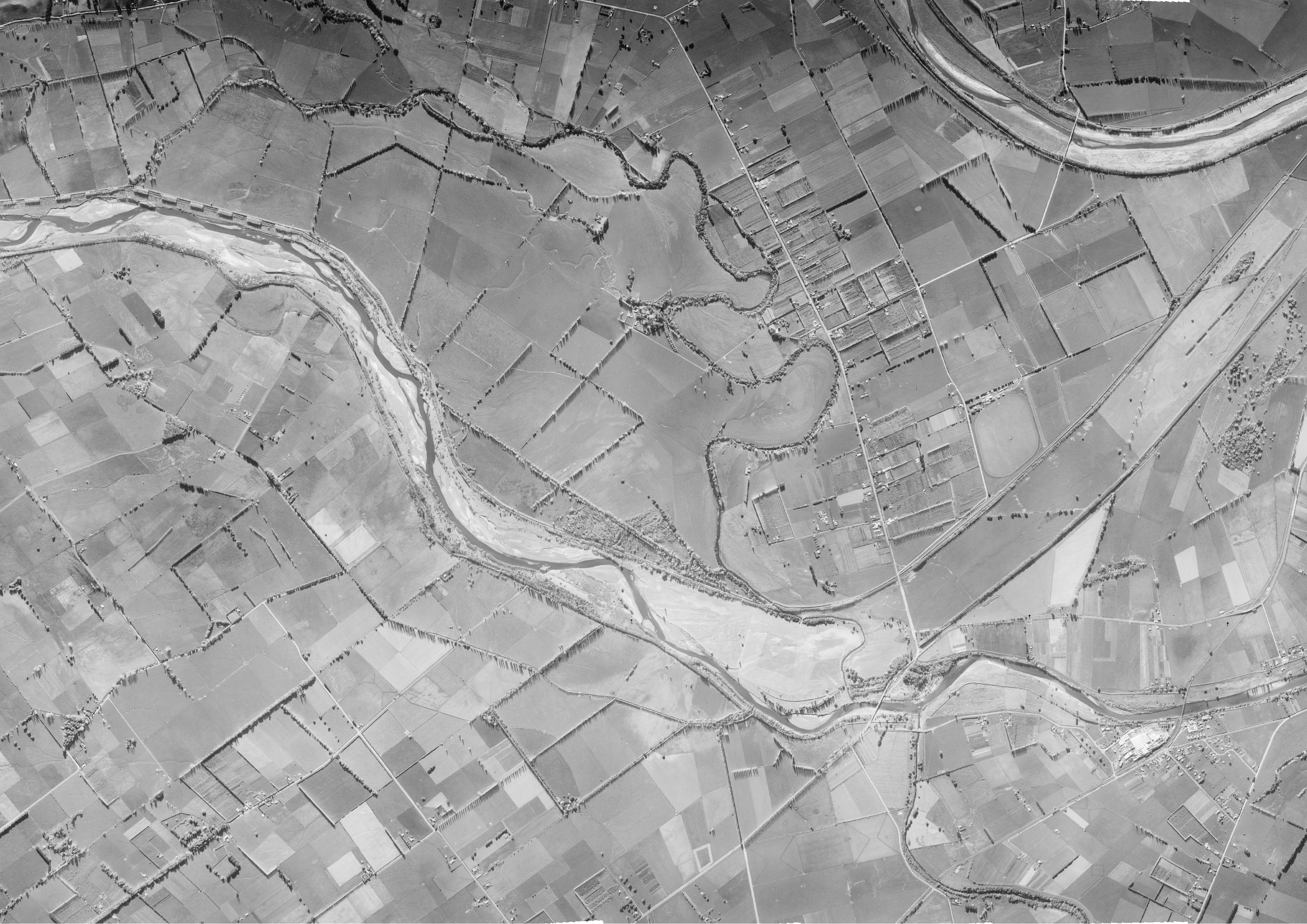
A spillway for the Ngaruroro had already been constructed in the 1950s but the river was still in its original channel (bottom right of image).

The river was diverted into the spillway in 1969 and the old channel became the Clive River (later the Mokotūāraro).
Light rain is drifting down onto the river at the Fernhill road bridge.
Behind the stopbank, barely 250 metres back from the river edge, is Ōmāhu marae. Four hapū of Ngāti Kahungunu whakapapa here, grouped together under the Piringa Hapū Authority.
In an office wedged between the wharenui Kahukuranui and the wharekai, marae treasurer Patricia Nuku is bathed in warmth from a radiant heater bar glowing from a stand in the corner.
Nuku was still a child when comprehensive upgrading of the stopbanks began.
“The changes I’ve seen in the river is loss of sand dunes, we had mud pools… You could see flounder, pull kōura out of the holes in the banks, catch tūna [eel] with a piece of cheese,” she says.
“The trees down there were beautiful - all natives - they’ve all been stripped back and replaced with what they are now.”
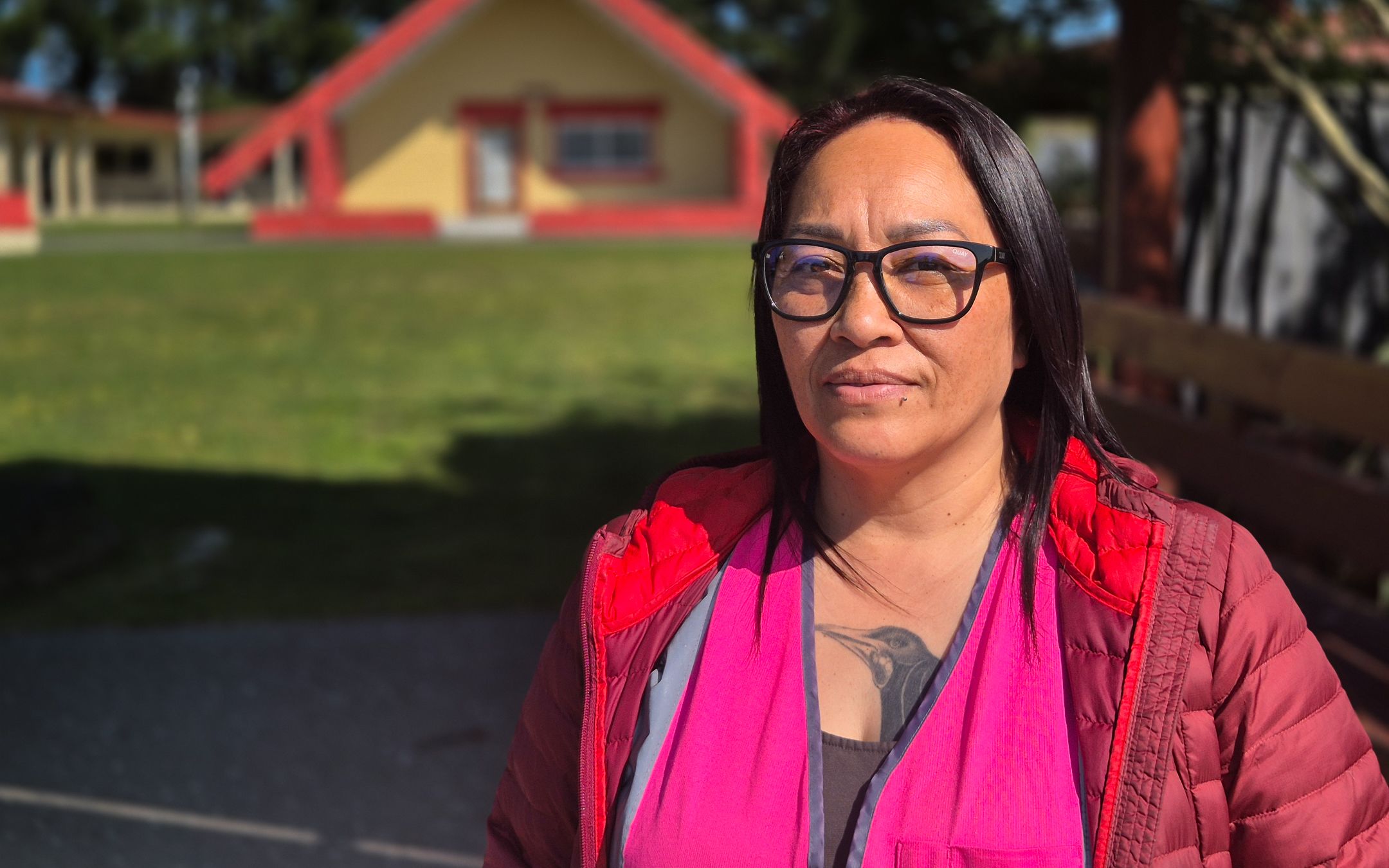
Patricia Nuku is treasurer at Ōmāhu Marae and has lived in the settlement all her life. Photo: RNZ/Alexa Cook
Patricia Nuku is treasurer at Ōmāhu Marae and has lived in the settlement all her life. Photo: RNZ/Alexa Cook
She can remember hearing the frogs calling at night from her grandmother’s house right next to the bridge. When the Ngaruroro came over the top of the stopbank during Gabrielle, that house was the first to be hit by floodwaters.
In total, 153 houses in Ōmāhu and Fernhill were affected by flooding.
Emergency stopbank repairs have given the community some temporary peace of mind, but Nuku and others are unnerved by some of the $250 million of additional government and council-funded works that are confirmed, in order to make land classified as category 2 after the cyclone safe to live on again.
"The flood review report that’s come through, they really need to sit down and have everyone at the table who can give good hard solid kōrero as to how that next process needs to look,” Nuku says.
“We don't want to flood again [but] we want it to be done properly.”
Hawke’s Bay Regional Council chief executive Nic Peet says the category 2 works - which are required to go ahead - will not limit the prospects of doing things differently in future.
“The category 2 projects are pretty much no-regrets projects and are really critical for those people in those communities,” he says.
“What we have paused are a number of projects that were on the books pre-cyclone, because we do want to go through that re-imagining [our] relationship with rivers process before we go building any of those projects.”
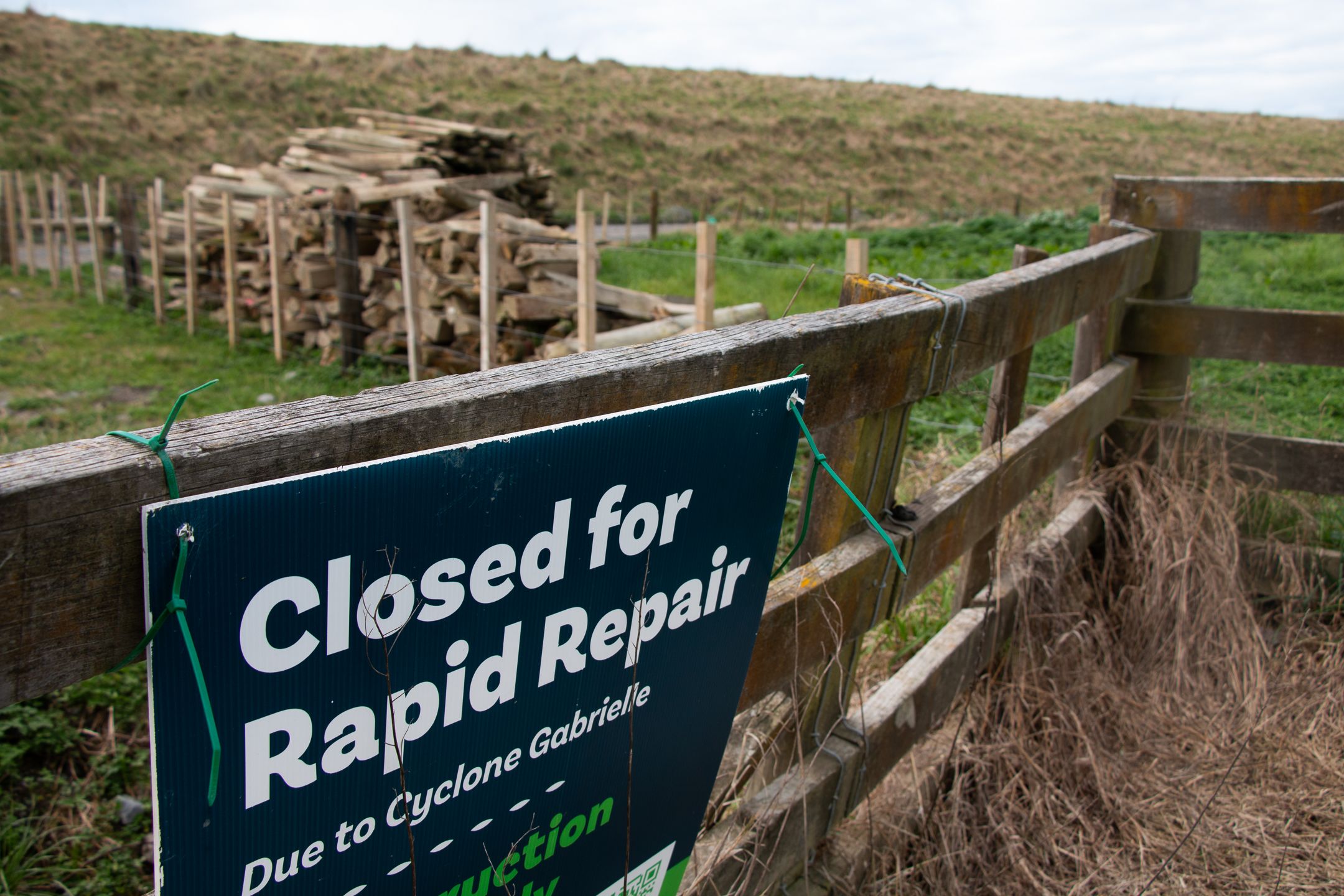
Rapid repairs of the stopbanks have largely been completed.
Rapid repairs of the stopbanks have largely been completed.
There are hard conversations and “very difficult trade-offs” that lie ahead, Peet says.
“The Ngaruroro, the Tutaekurī and the Tukituki all pass through private land. There are people with interests who live on the banks of those rivers, there are towns, there’s critical infrastructure, there are the interests of mana whenua.”
Any alterations to the design or location of the existing stopbanks - if the community collectively decided that was the best option in some cases - will be expensive, he says.
Councillor Sophie Siers says the cyclone highlighted the shortcomings of relying solely on stopbanks, though.
“You can't just get bigger and higher and wider because the level of water that you're containing is too great to ever be manageable, and the risk is too great of what might happen [when they breach].”
There need to be honest conversations about what is possible, she says.
“Communities need to get, it will flood - the water will not stay in those rivers, whatever we do. But when those big events come, we know what's going to happen. So we know how to plan for it.”
The Heretaunga aquifer research is in the mix, and NIWA is now modelling the downstream effects on flows and surface water.
Any change to the river is “a little bit like squeezing a sausage”, Peet says.
“The impact you have on one part of the system, you need to make sure that you’re not going to cause problems for anybody else along the floodplain.”
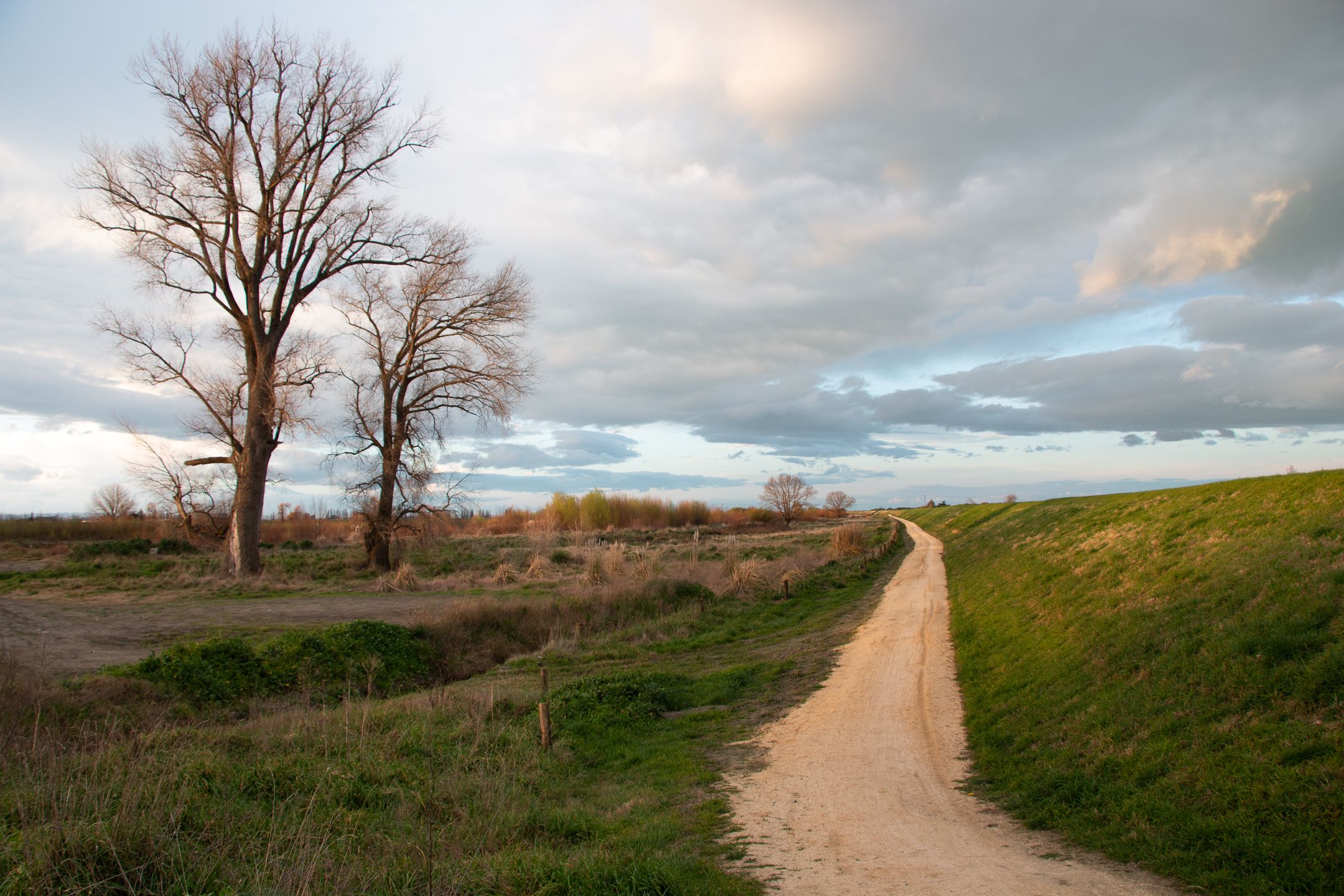
When the river is not in flood, pathways alongside or on top of the stopbanks provide recreation for people in the region,
When the river is not in flood, pathways alongside or on top of the stopbanks provide recreation for people in the region,
Richard Measures says while there are benefits to widening the river at the recharge site, the modelling may only show a modest effect on peak flood flows.
Instead, “it’s allowing a larger braidplain or floodplain through that stopbanked section of the lower river [that] has a big effect on flood capacity”.
River engineer Kyle Christiansen, who was on the independent panel that reviewed the scheme’s performance, says the Ngaruroro’s future will inevitably involve a mix of hard and soft engineering.
“There’s an idea that returning to some point in time is something that we can reverse-engineer, but the catchment conditions are very different from that time.”
It’s “interesting and useful” to look at the visual record of changes, as Forest and Bird and Sustainable Hawke’s Bay have done, he says. “But trying to attribute them all to engineering intervention under the premise that we should be trying to return to … some reference state when the conditions are very different in the system, is problematic.”
He and the rest of the panel still recommended embracing the concept of making room for the river.
“These solutions can include retreating stopbanks and erosion protection infrastructure to allow more natural river functioning through meandering and lateral erosion; as well as allowing floodwaters to spill, flow and be stored in a controlled manner through secondary systems capable of conveying very large floods,” they wrote in their final report.
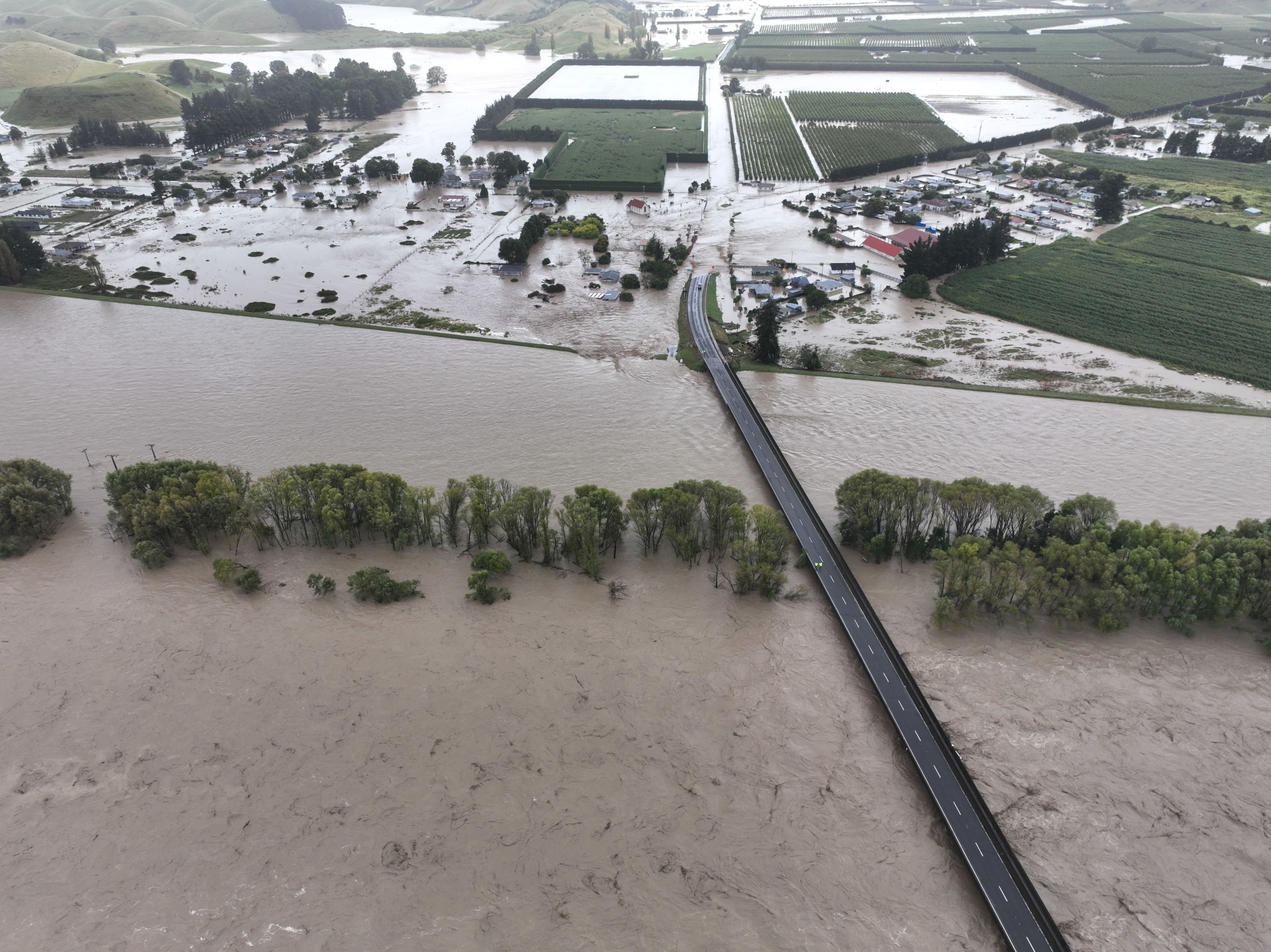
ōmāhu and the Fernhill road bridge at the height of flooding during Cyclone Gabrielle, February 2023.
ōmāhu and the Fernhill road bridge at the height of flooding during Cyclone Gabrielle, February 2023.
Working out where floodwaters will go when stopbanks are inevitably breached, and how fast, is critical, Christiansen says.
Mike Glazebrook says that’s an important lesson he hopes the council has taken on board.
“Instead of just overtopping in an uncontrolled manner like it did during Gabrielle, there’s got to be places that are designated as sacrificial flood zones or you have large spillways that are reinforced to take water spilling over, so it doesn’t just pick its own place to fail.”
What’s already there did work for a long time, though, Glazebrook says. “My advice would be don’t throw the baby out with the bathwater because that proved itself pretty valuable during Cyclone Gabrielle.”
The flood review was deeply critical of the long-term lack of engagement between local authorities and mana whenua, who were confined, bit-by-bit, to some of the most flood-prone areas and then for decades ignored.
Ngāti Kahungunu iwi chair Bayden Barber, who sits on the council’s Māori standing committee, says things are gradually improving.
“It’s been kind of them and us, mainstream science versus mātauranga Māori, there’s always been that clash. But I think we need to get past that. There’s an ability to use both.”
Like Patricia Nuku, he had qualms about some of the early planning rounds for new flood protections.
“But I got a call from [regional council chair] Hinewai [Ormsby] saying some of the early stuff has already been set but the next tranche of funding, which is the big part of it, they want to be sitting down with iwi around how that’s going to be designed, how it’s going to work,” he says.
“I’m kind of optimistic on where we can go together, but time will tell.”
Peet acknowledges the “really difficult and challenging history” and says getting mana whenua fully involved in future decisions will be fundamental to success.
Planning for comprehensive discussions with the whole community has started, and he hopes that the council will find funding for that in its long-term plan early next year.
Tom Kay - who has family living behind the stopbanks in Taradale - says getting people to grasp the reality of the terrain they live on is an important step.
“At the moment you see a big grass bank, which even if you stand up on top of, you see a line of willows. It's kind of always over there, you know, and you don't actually necessarily see what's happening, so there is that disconnect,” he says.
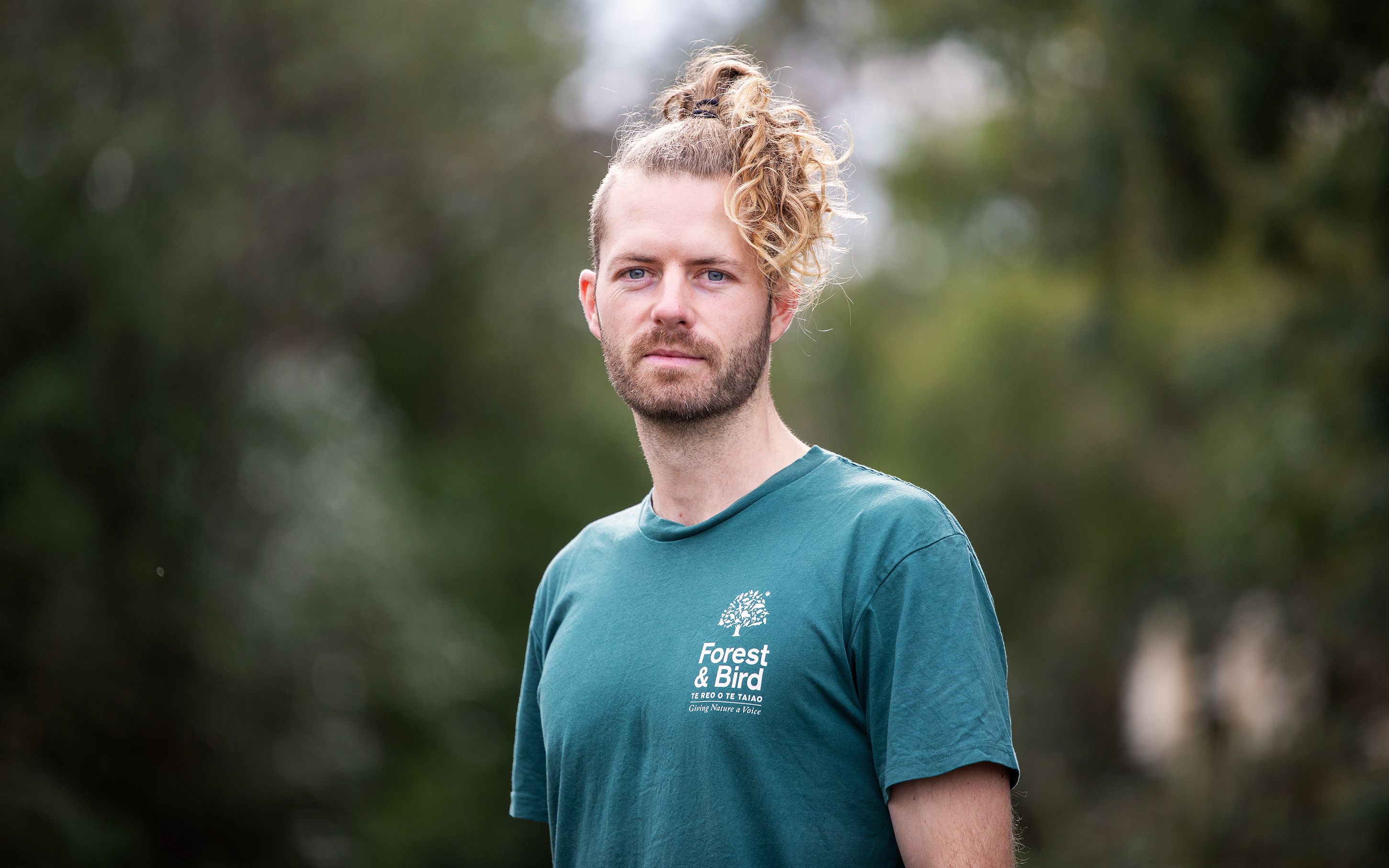
Forest and Bird rivers advocate Tom Kay grew up in Hawke's Bay and still has family living there. Photo: Supplied/Ally Bell Carline
Forest and Bird rivers advocate Tom Kay grew up in Hawke's Bay and still has family living there. Photo: Supplied/Ally Bell Carline
Patricia Nuku wants those who have spent years researching the river to have input.
“We can’t just leave out Ngaio [Tiuka] and Shade [Smith] ... and exclude the information they already have and already know.”
In a corner of that warm office at Ōmāhu marae, Cobham Burns has been sitting and listening to Patricia Nuku talk, while half-reading a book.
Young and wiry, wearing a Piringa Hapū bucket hat and a hoodie, he puts his book down to explain how the Ngaruroro got its full name: Nga-ngaru-o-nga-upokororo-mai-i-mokotūāraro.
The story goes that the deity Mahu noticed the rippling waves created by large shoals of upokororo - the native grayling - startling en masse. “Two generations down comes Tamatea,” Burns says. “He would have come up the river with his son Kahungunu … and what does Tamatea do? He gets one of his followers to throw a stone, boom. Fish start going like this, running away from where the rock was.”
The upokororo is extinct now. If Cobham Burns, the descendant of Kahungunu, was to cast a stone into the water, the only ripples would be concentric circles expanding out from where it sank.
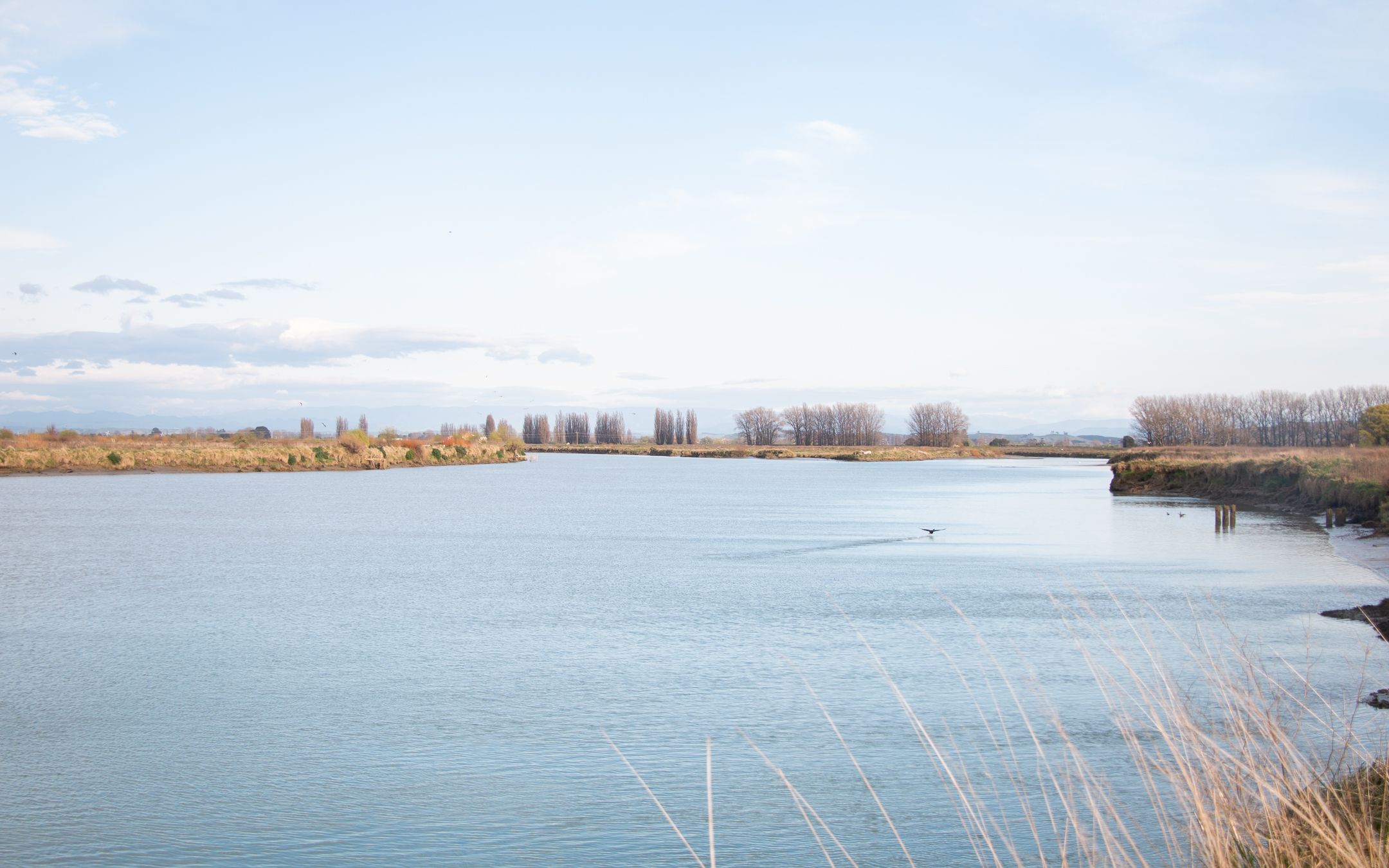
The Ngāruroro and Tutaekurī rivers converge near Clive. The rivers used to have separate mouths but were engineered into a single rivermouth after the 1931 Napier earthquake.
The Ngāruroro and Tutaekurī rivers converge near Clive. The rivers used to have separate mouths but were engineered into a single rivermouth after the 1931 Napier earthquake.
Like Kyle Christiansen warns, some things are changed forever. But the hapū hopes for a day when some of those mahinga kai sites are restored and their pēpeha becomes practice rather than myth.
“I would love to live the pūrākau (stories) that we’ve been taught,” Burns says.
“All we can do now is help it and sustain it where it is.”
Credits
Reporter
Kate Newton
Executive Editor
John Hartevelt
Design
RNZ
Photographs
Kate Newton, unless otherwise credited
Maps and aerial imagery were supplied by LINZ (2022 and 2023 aerial imagery) and Sustainable Hawkes Bay/Forest and Bird (c.1932 cadastral map, 1950s aerial imagery, braidplain boundaries and stopbank boundaries and damage).


